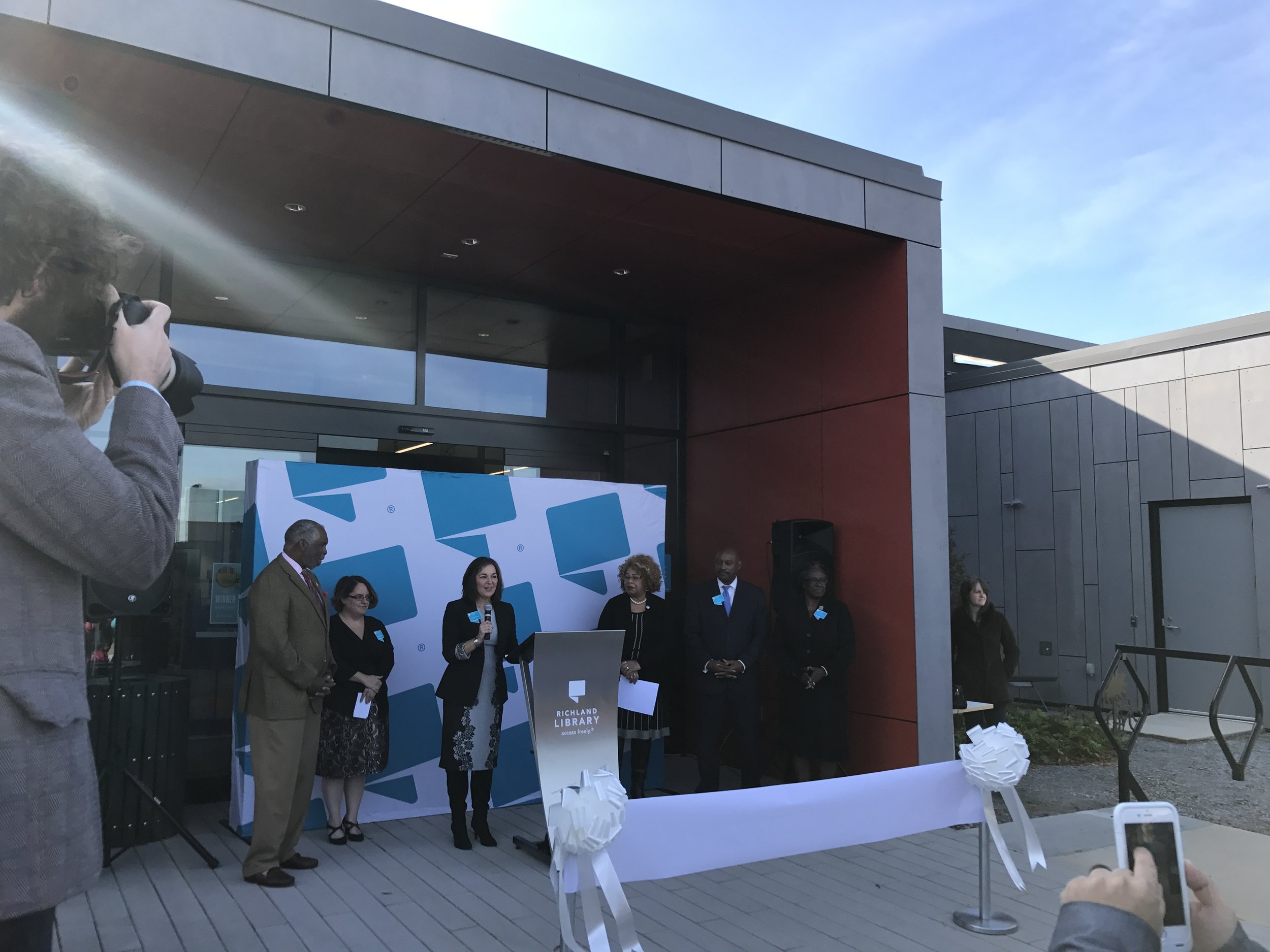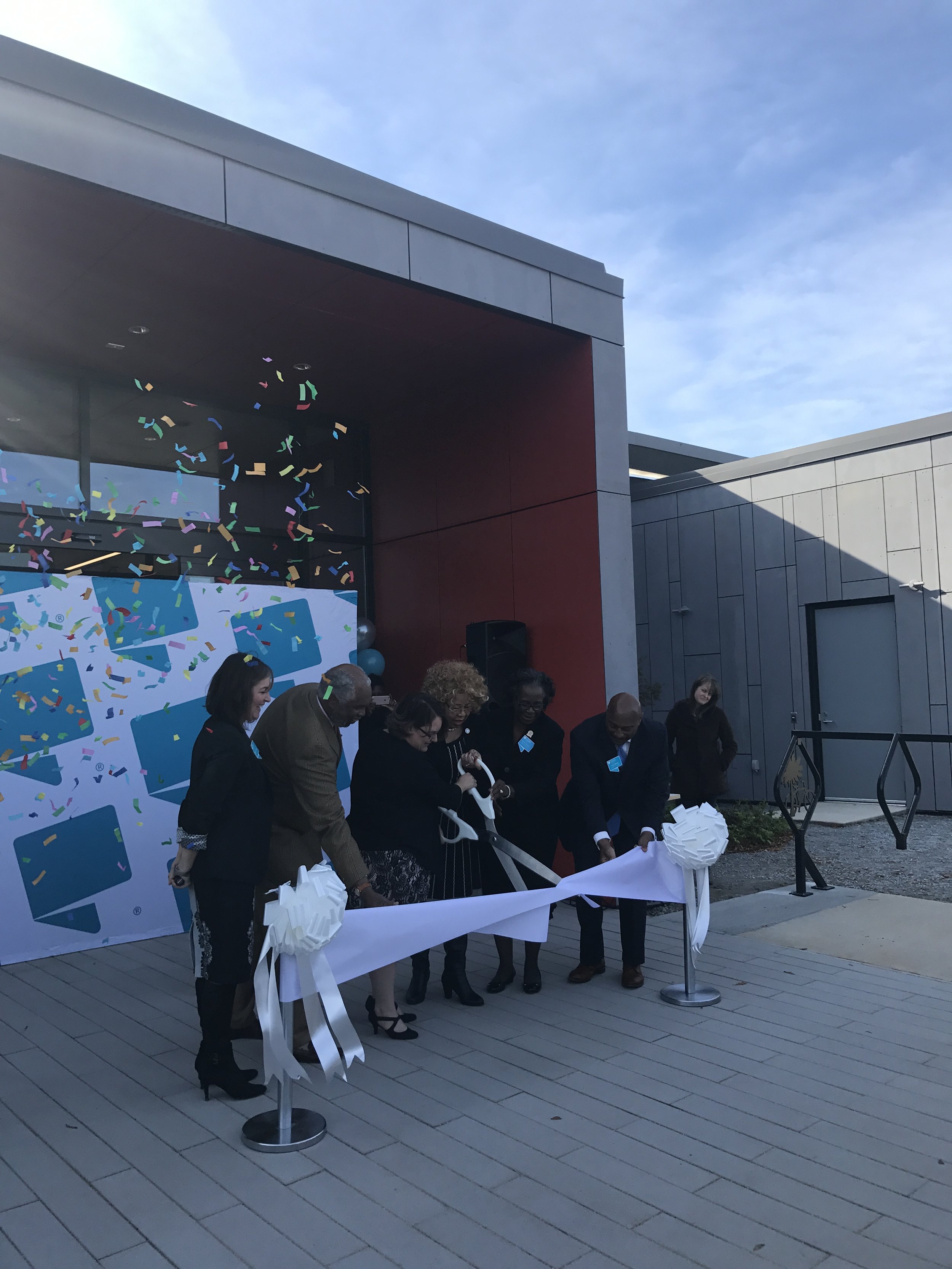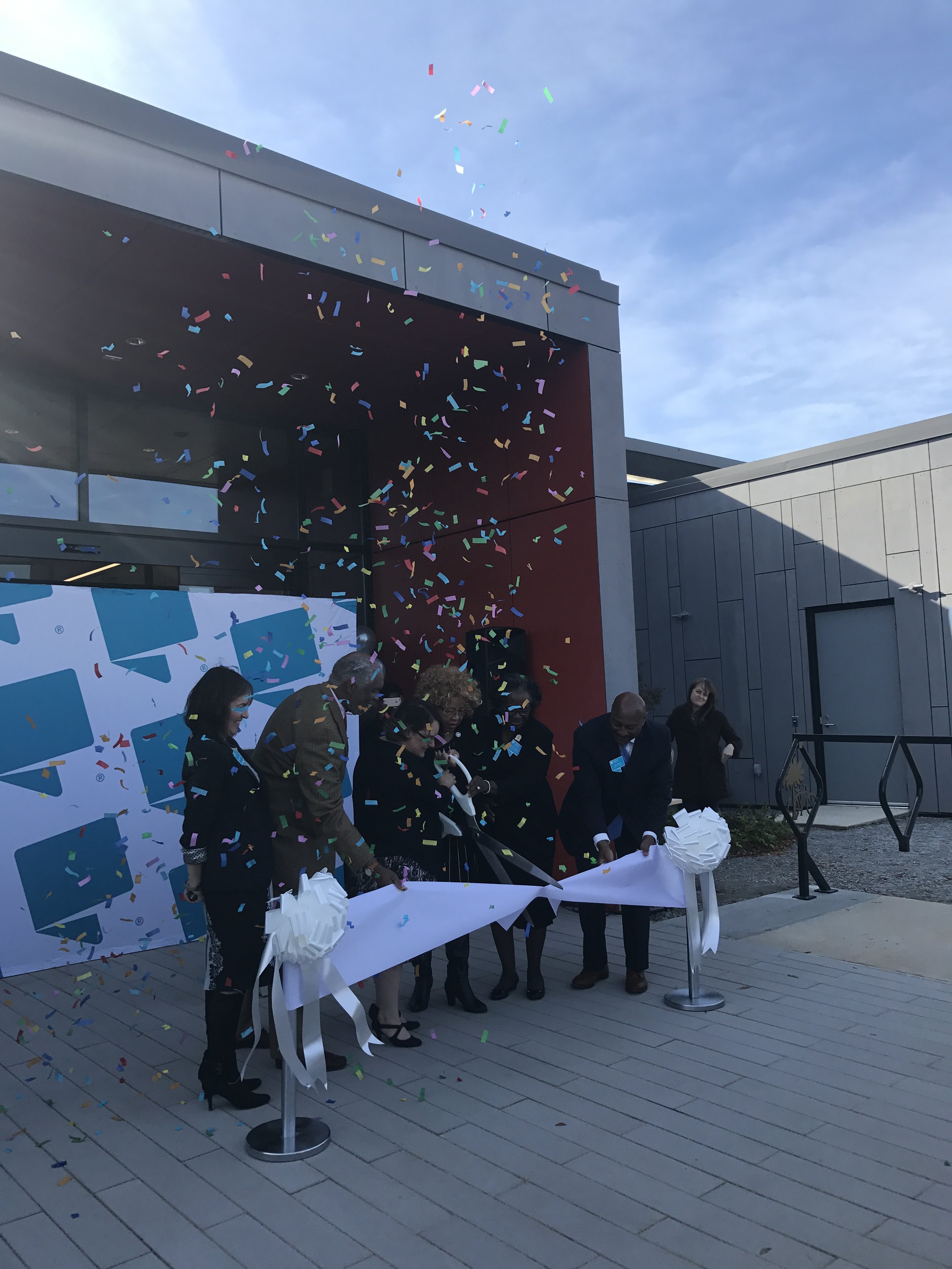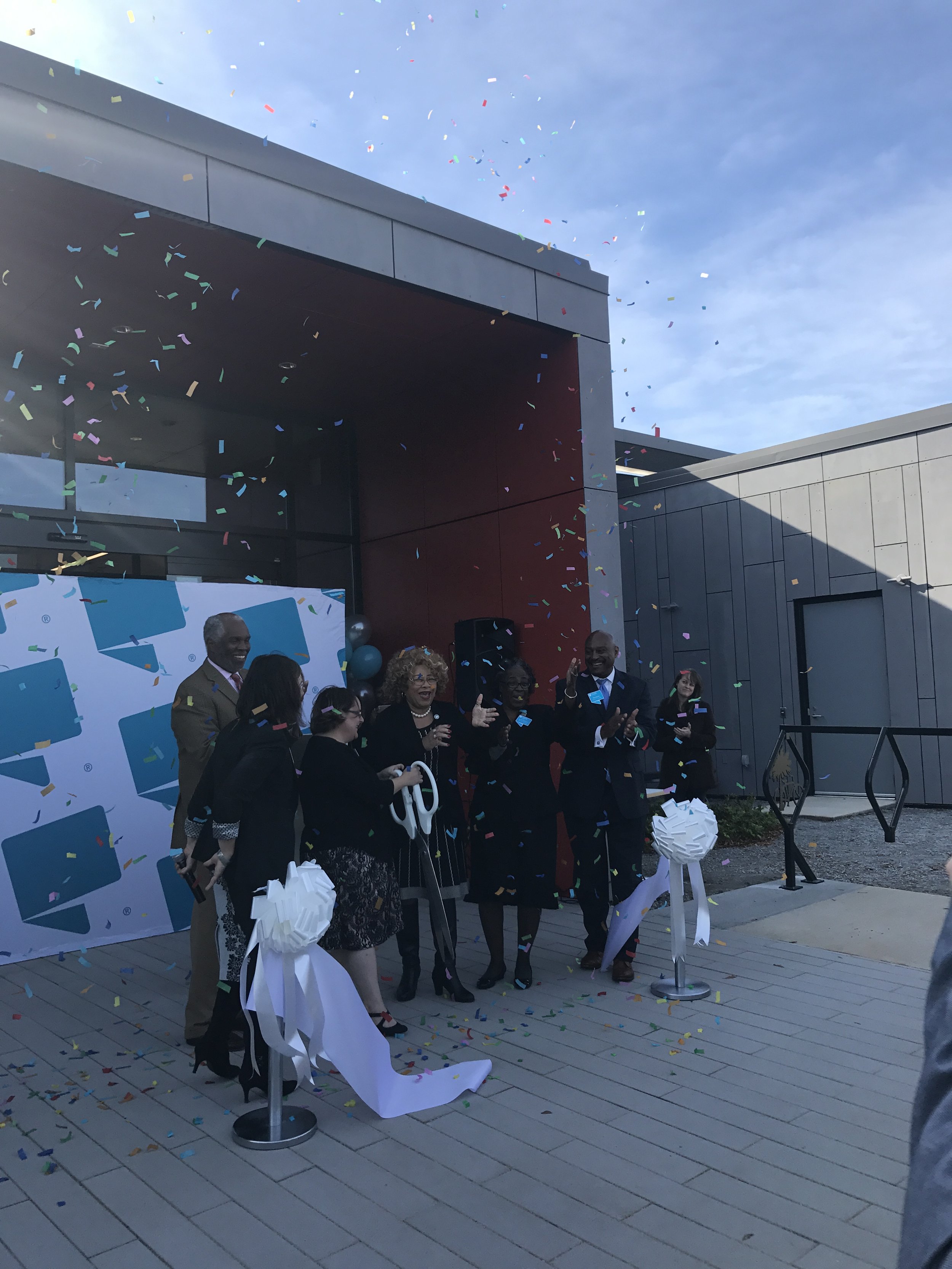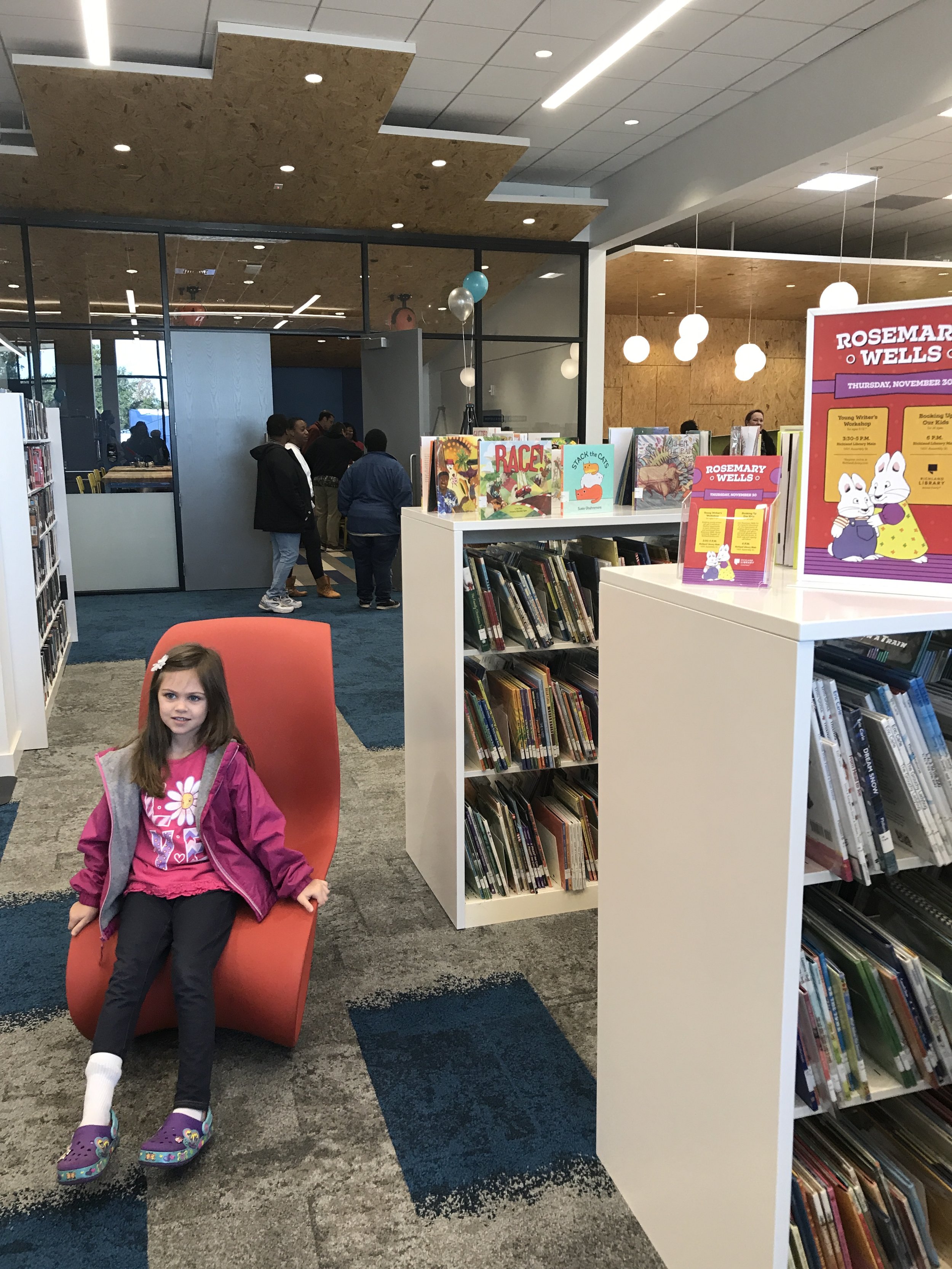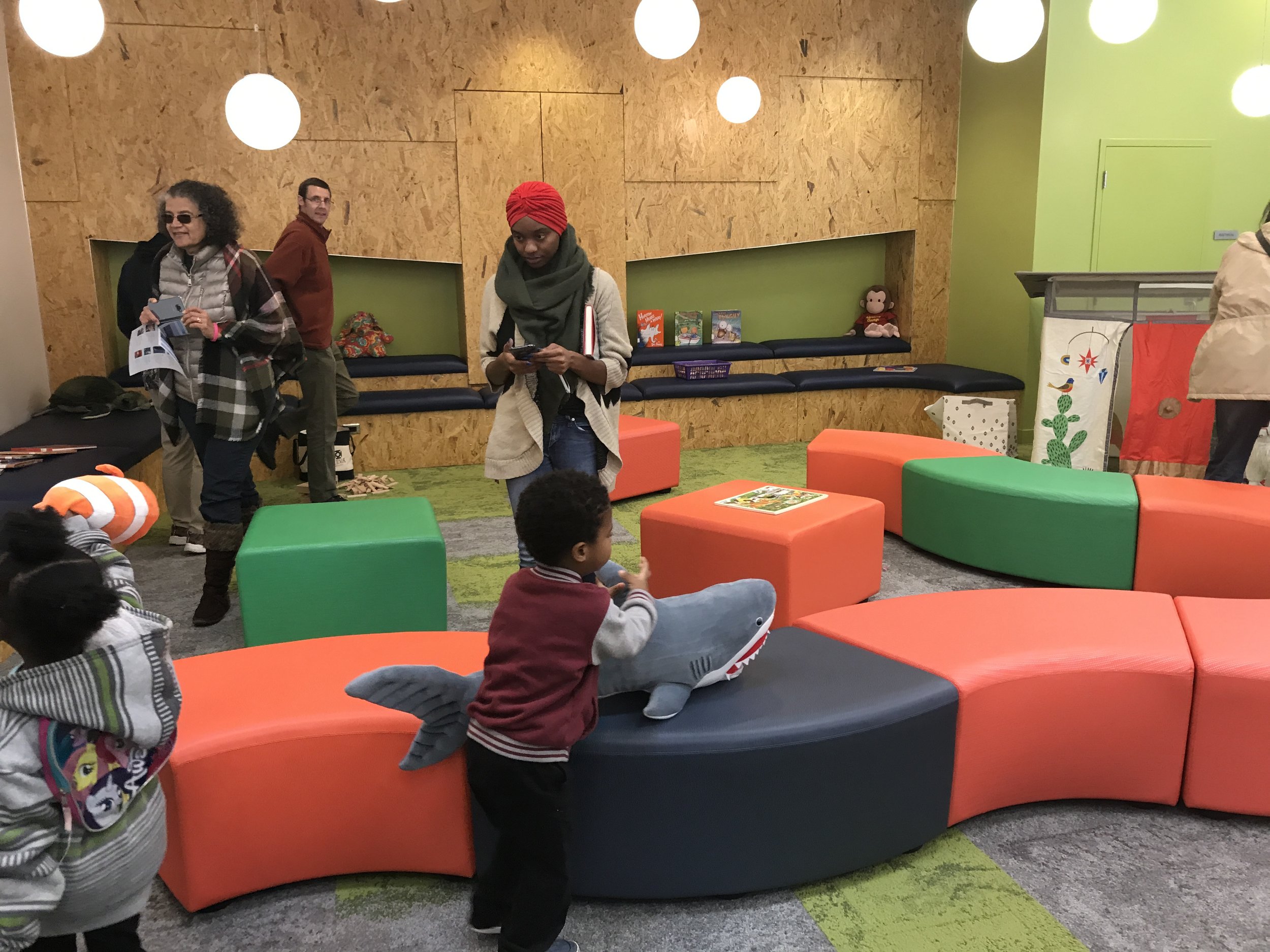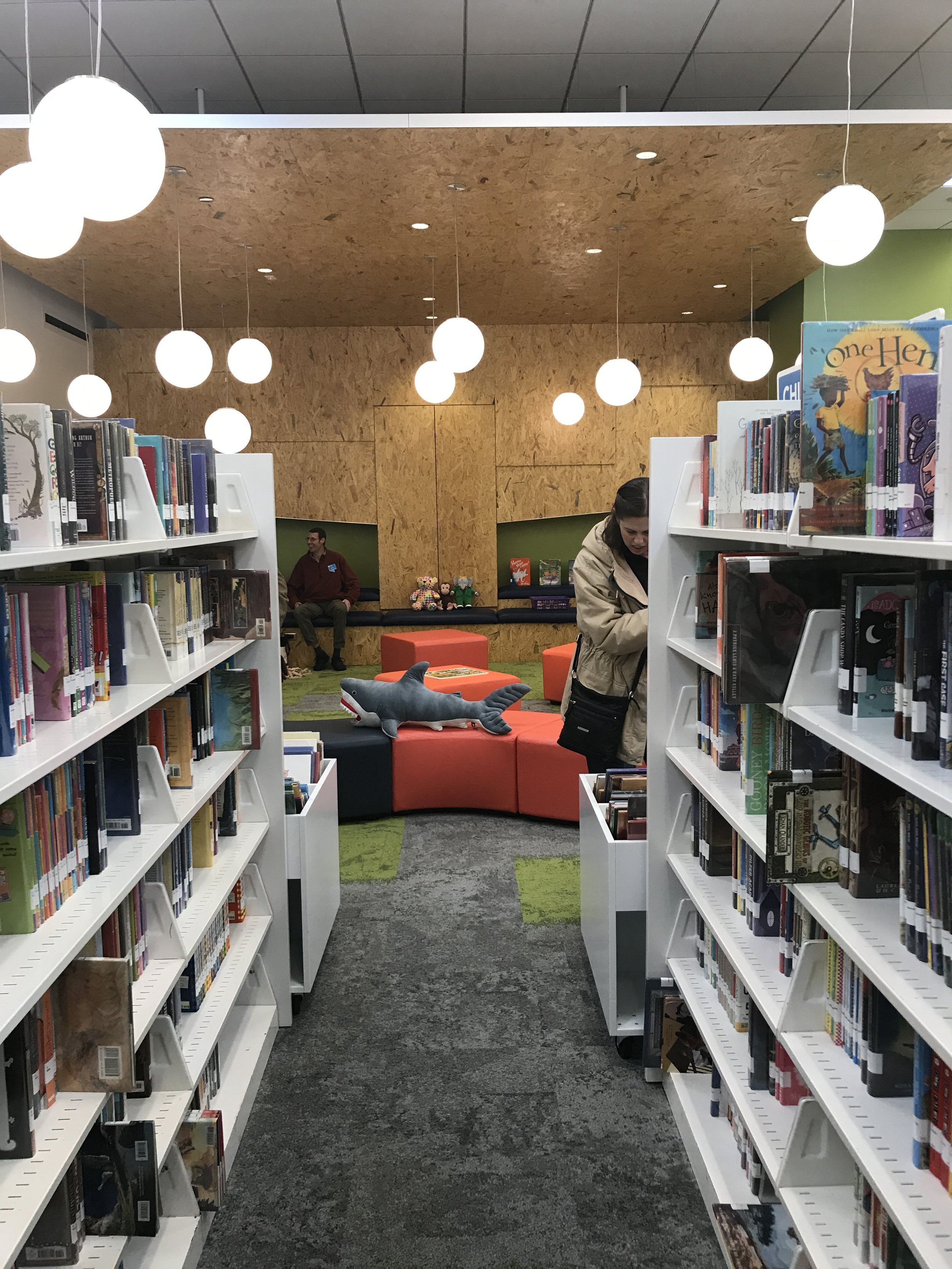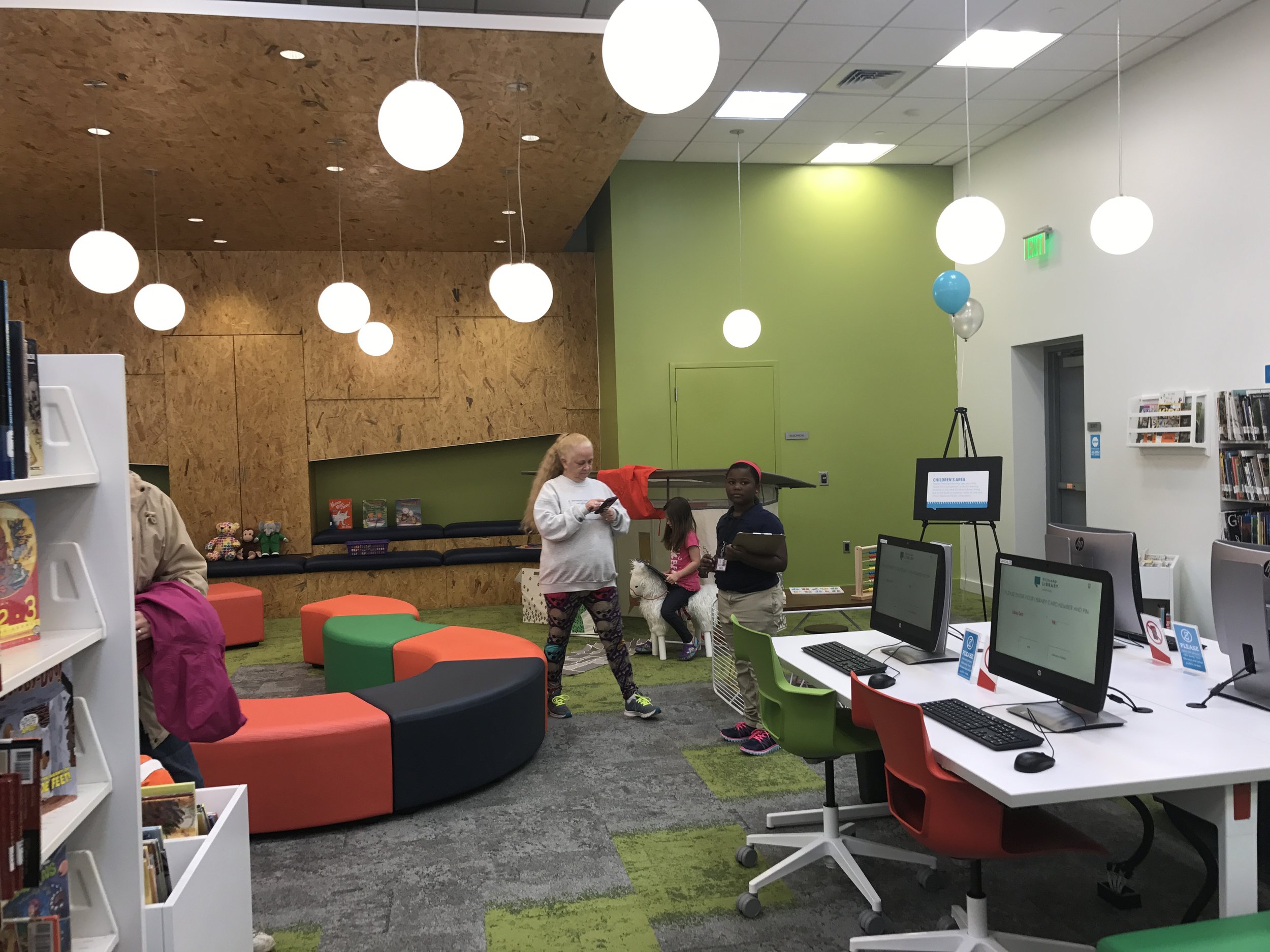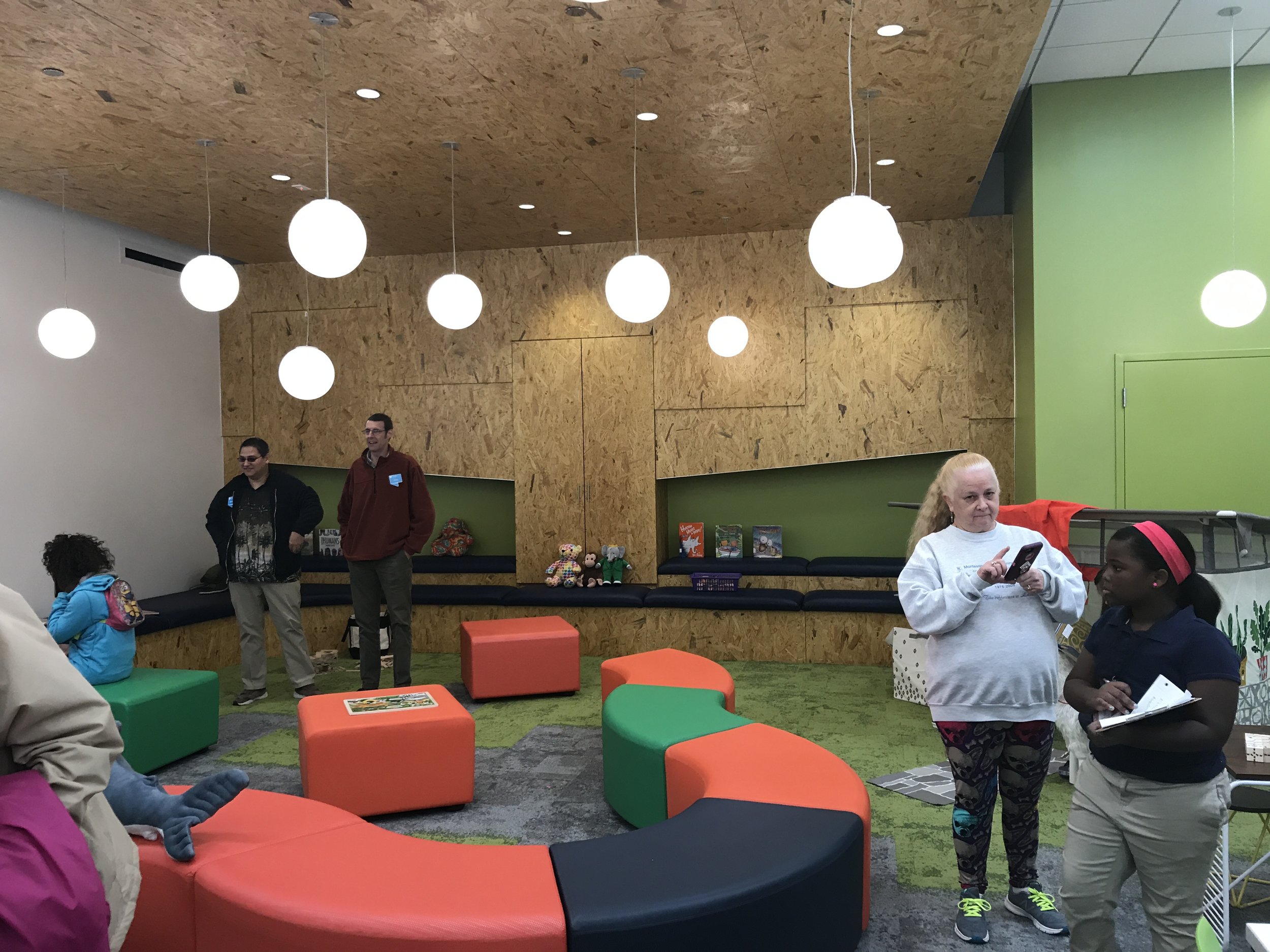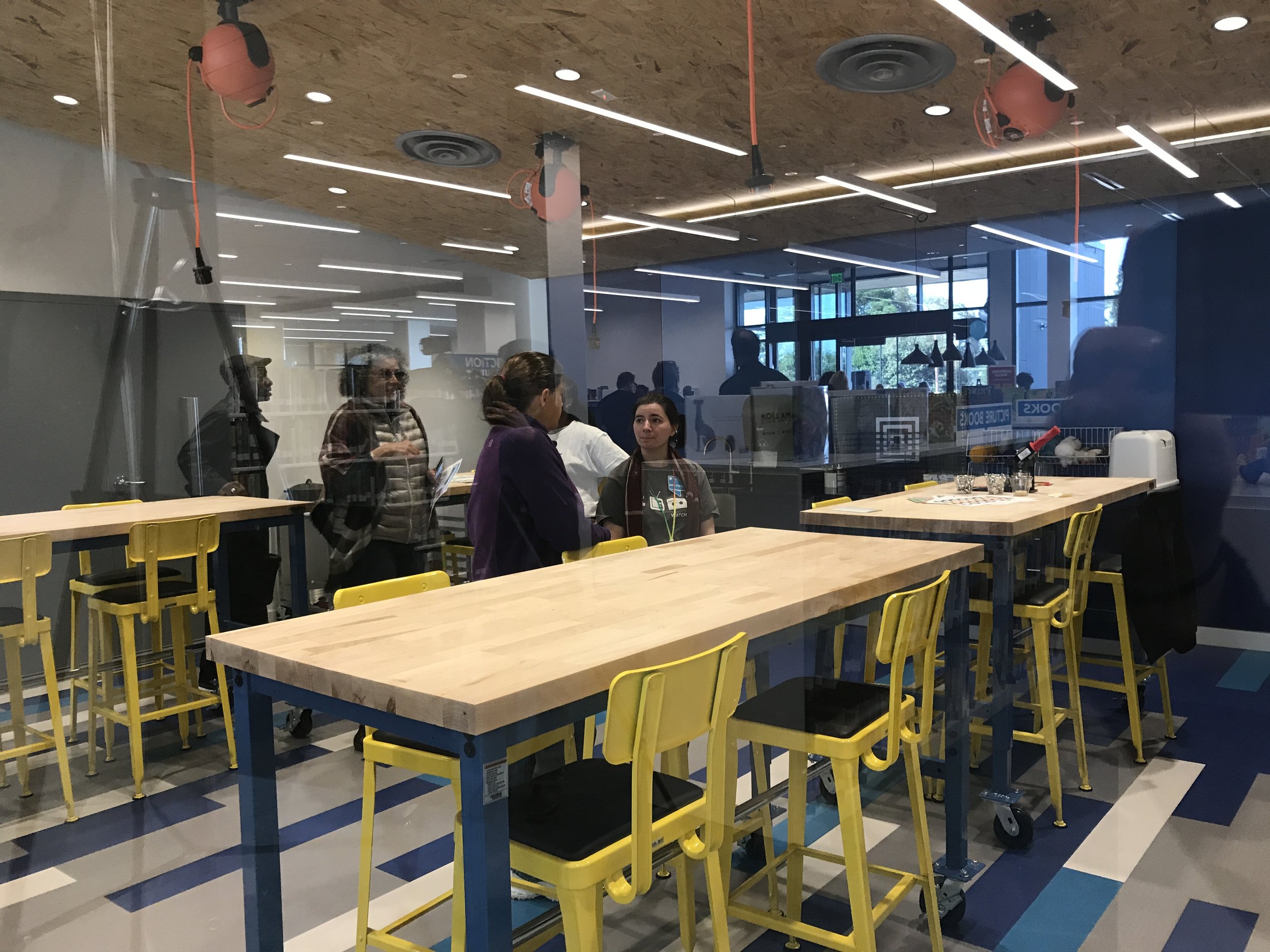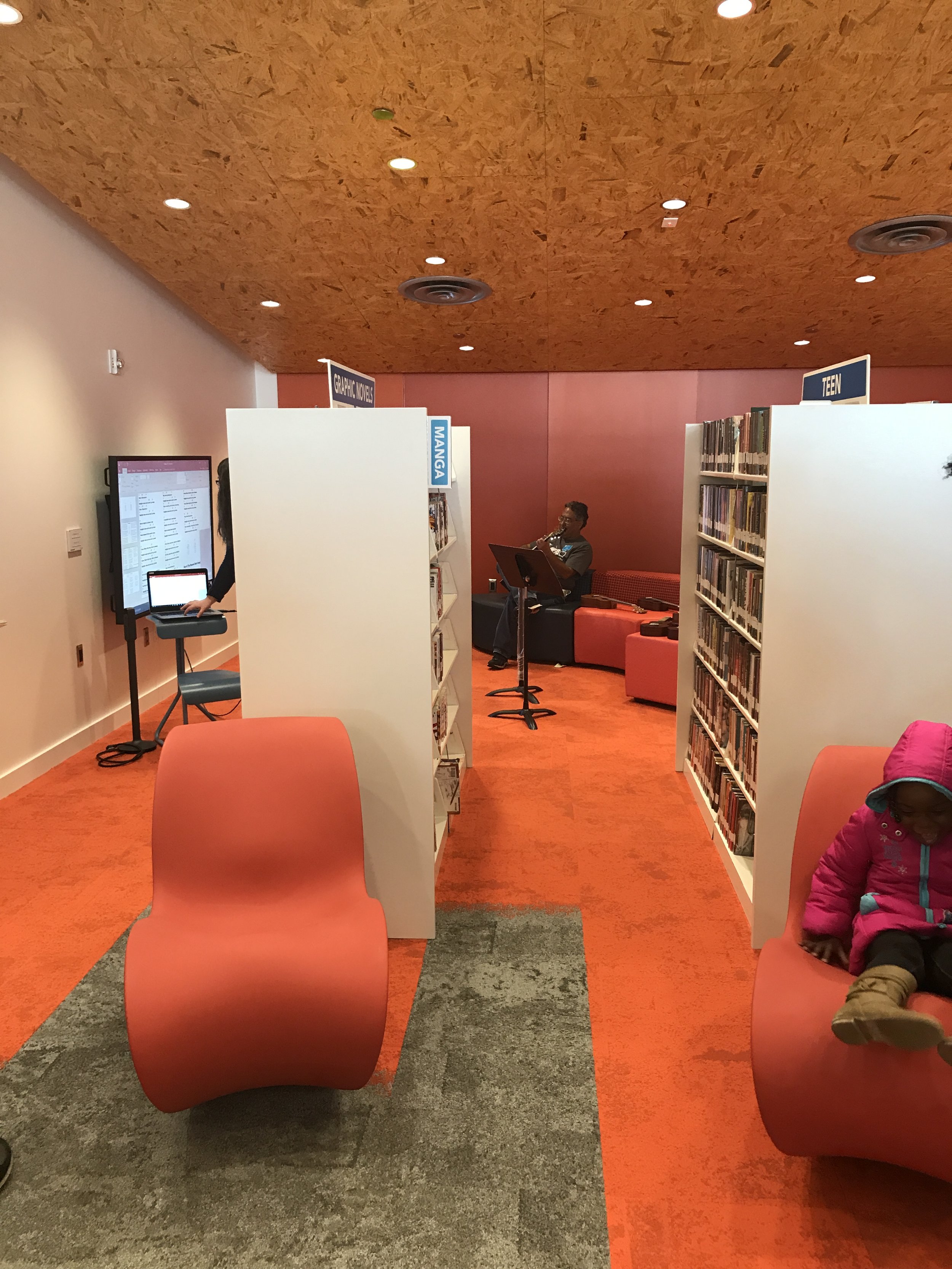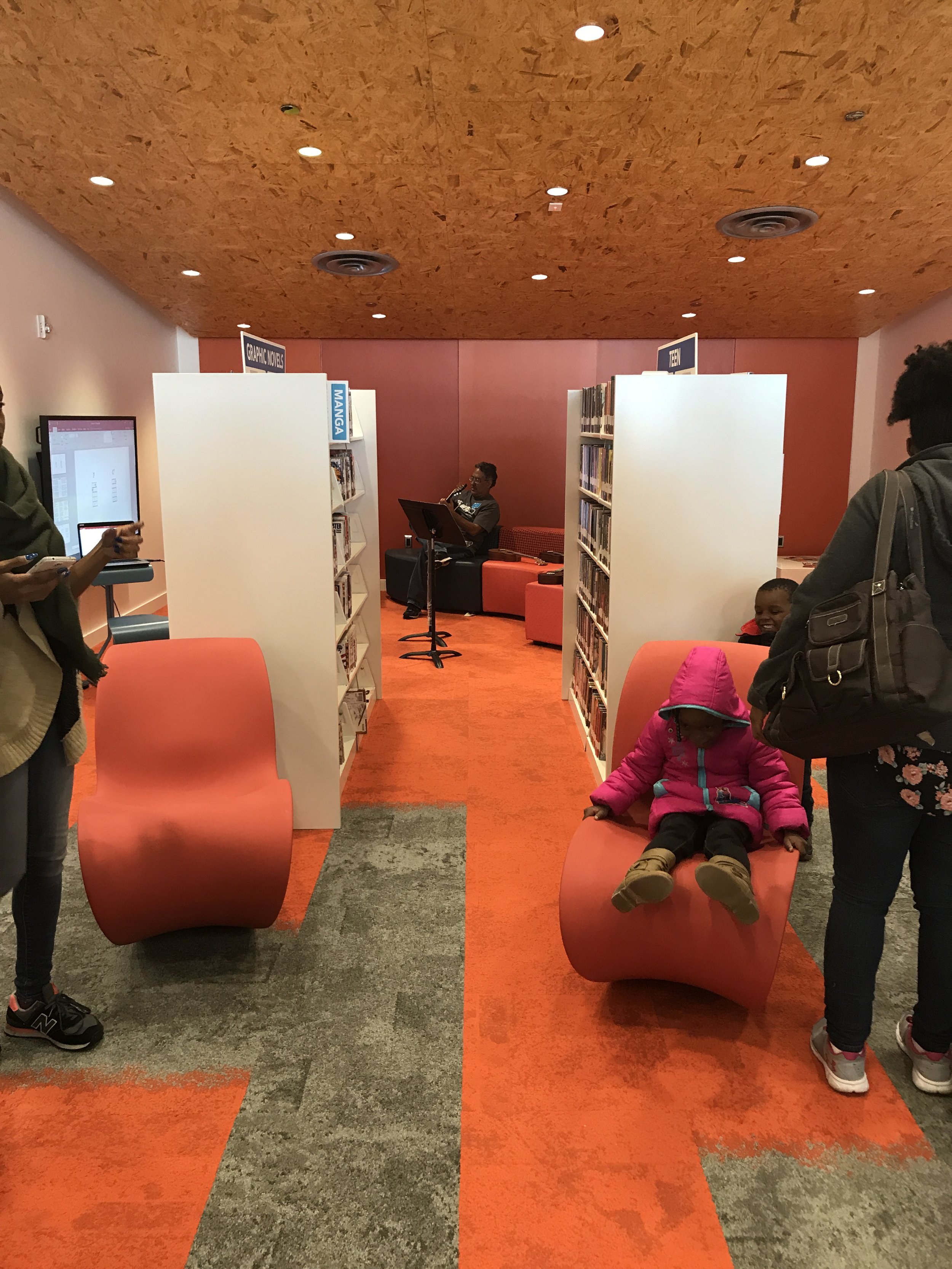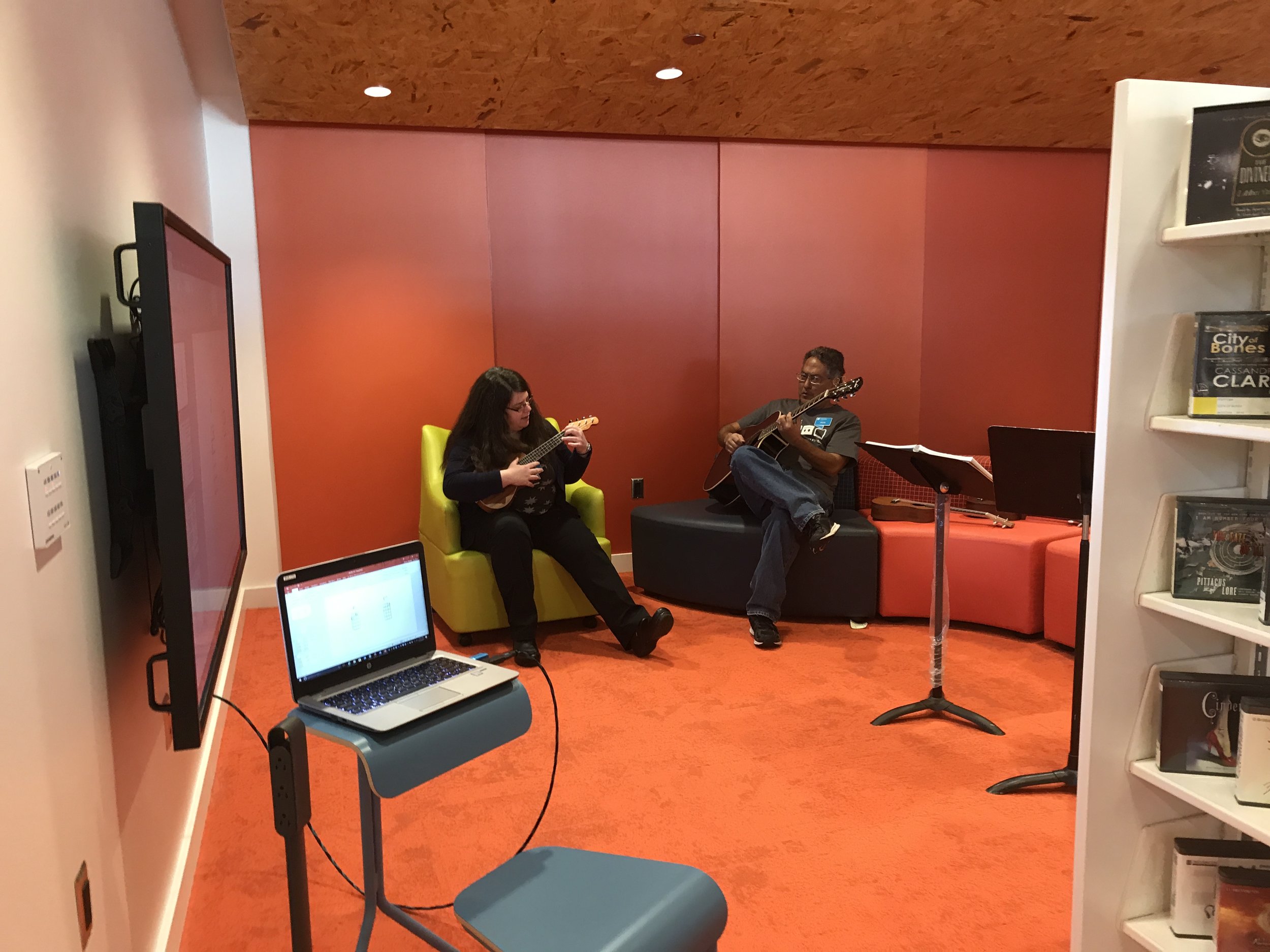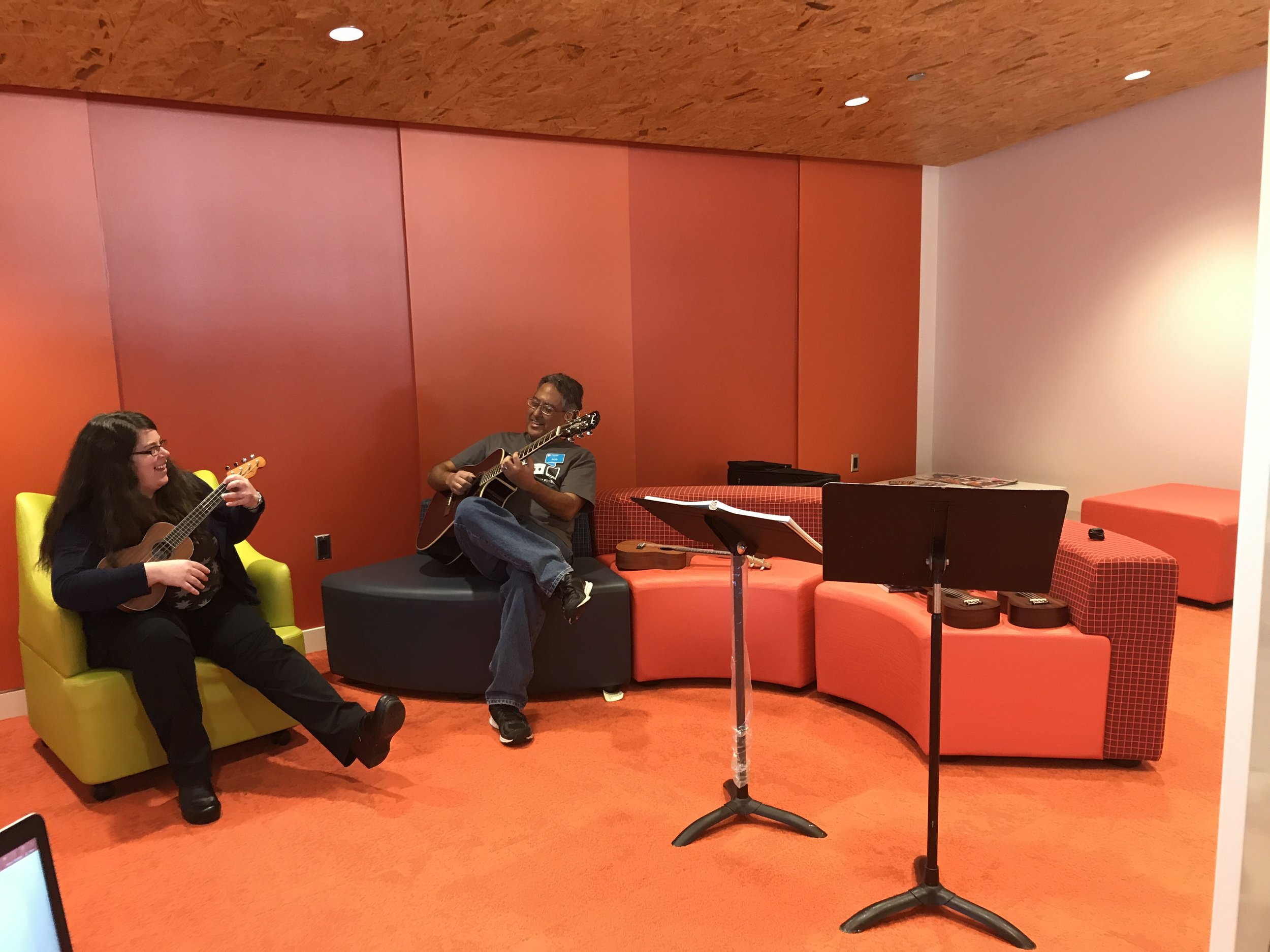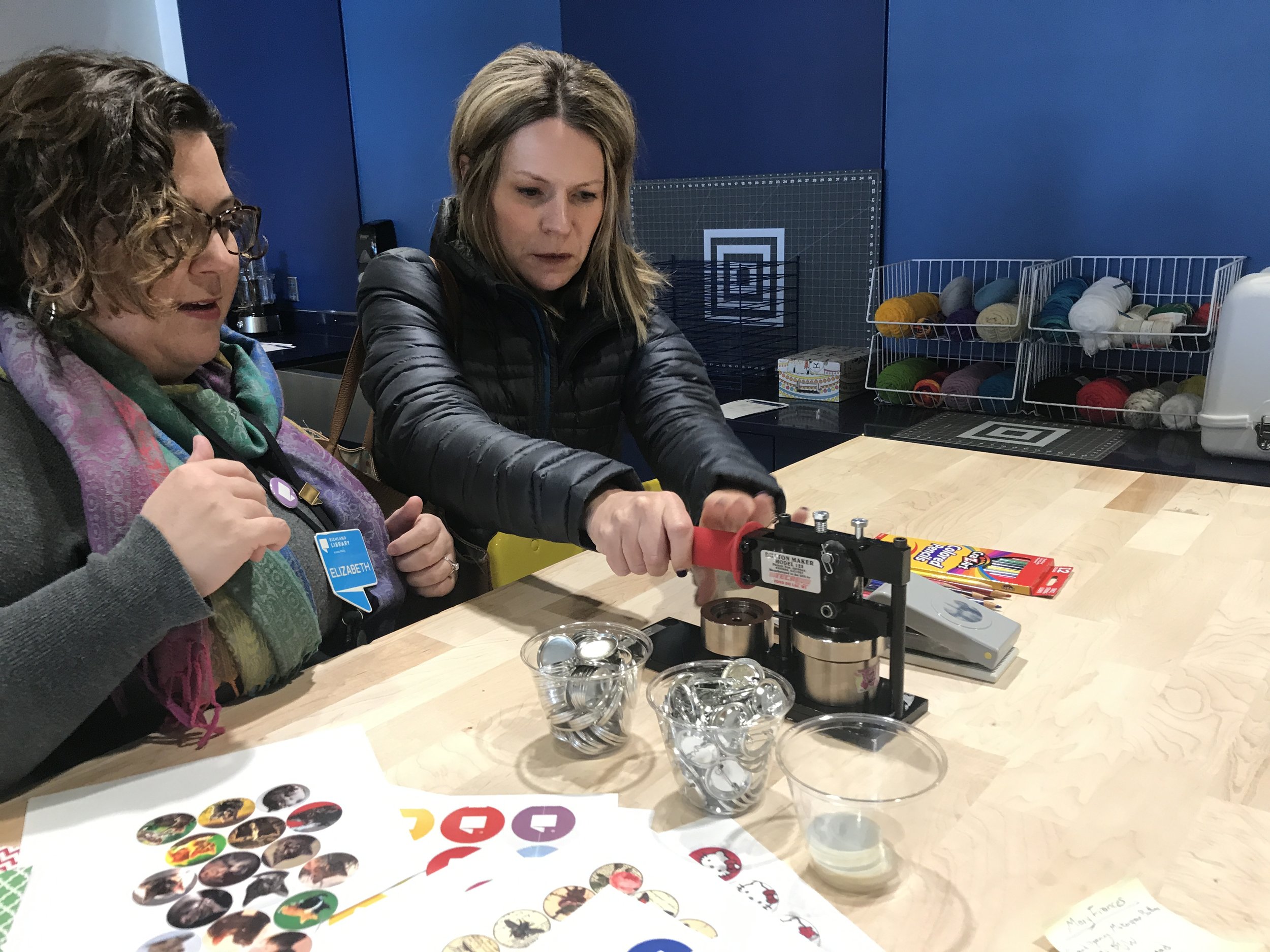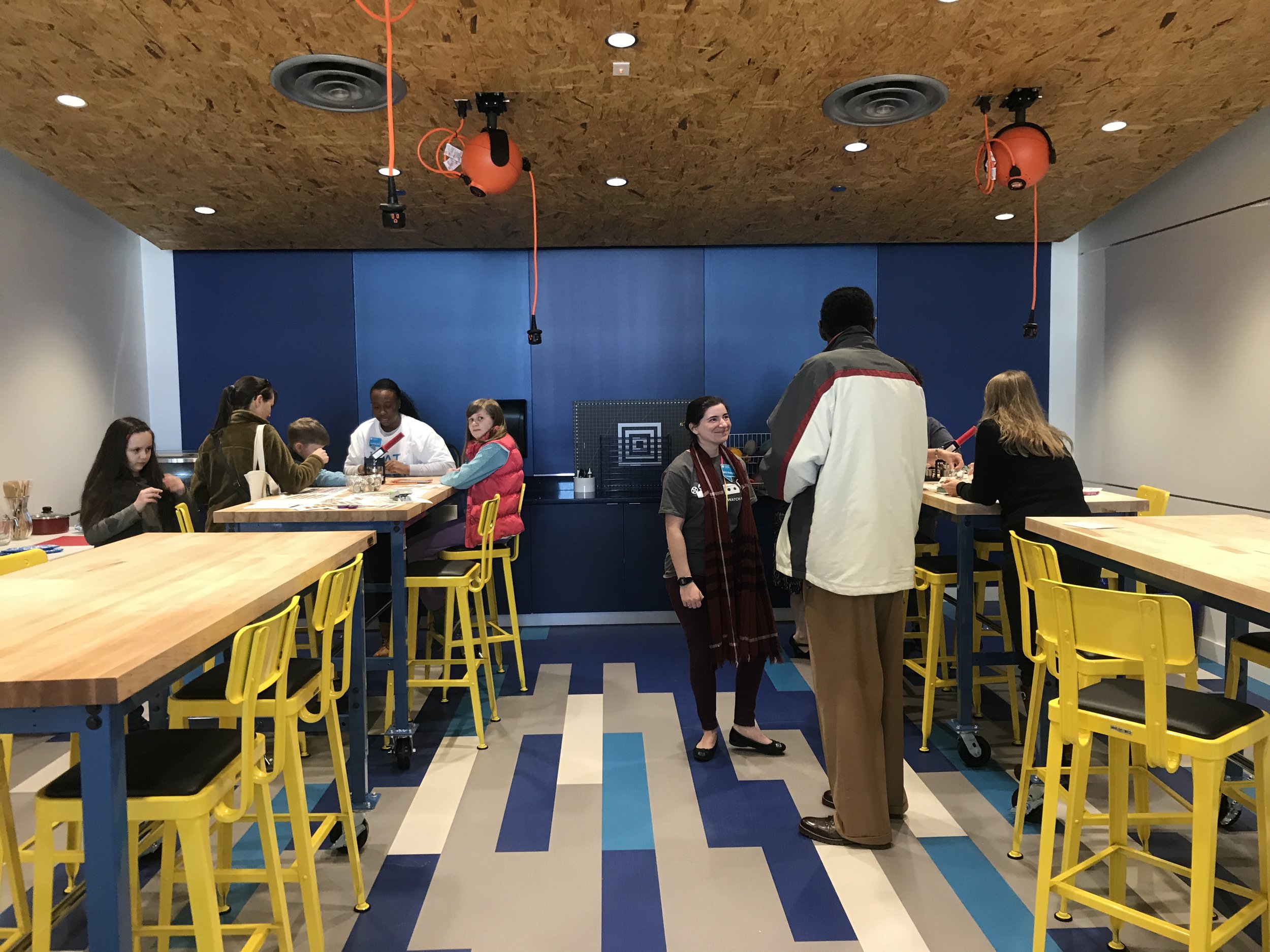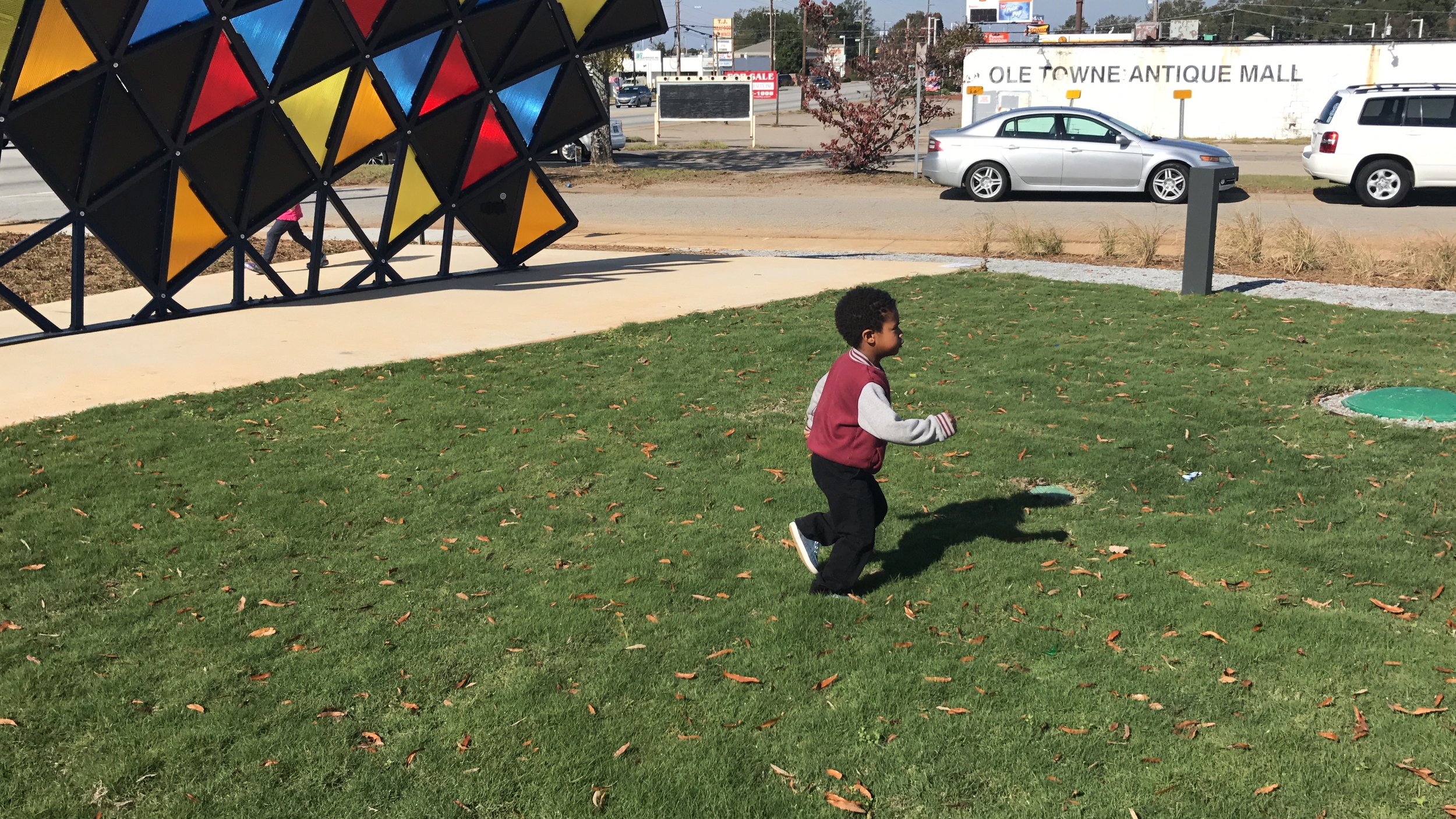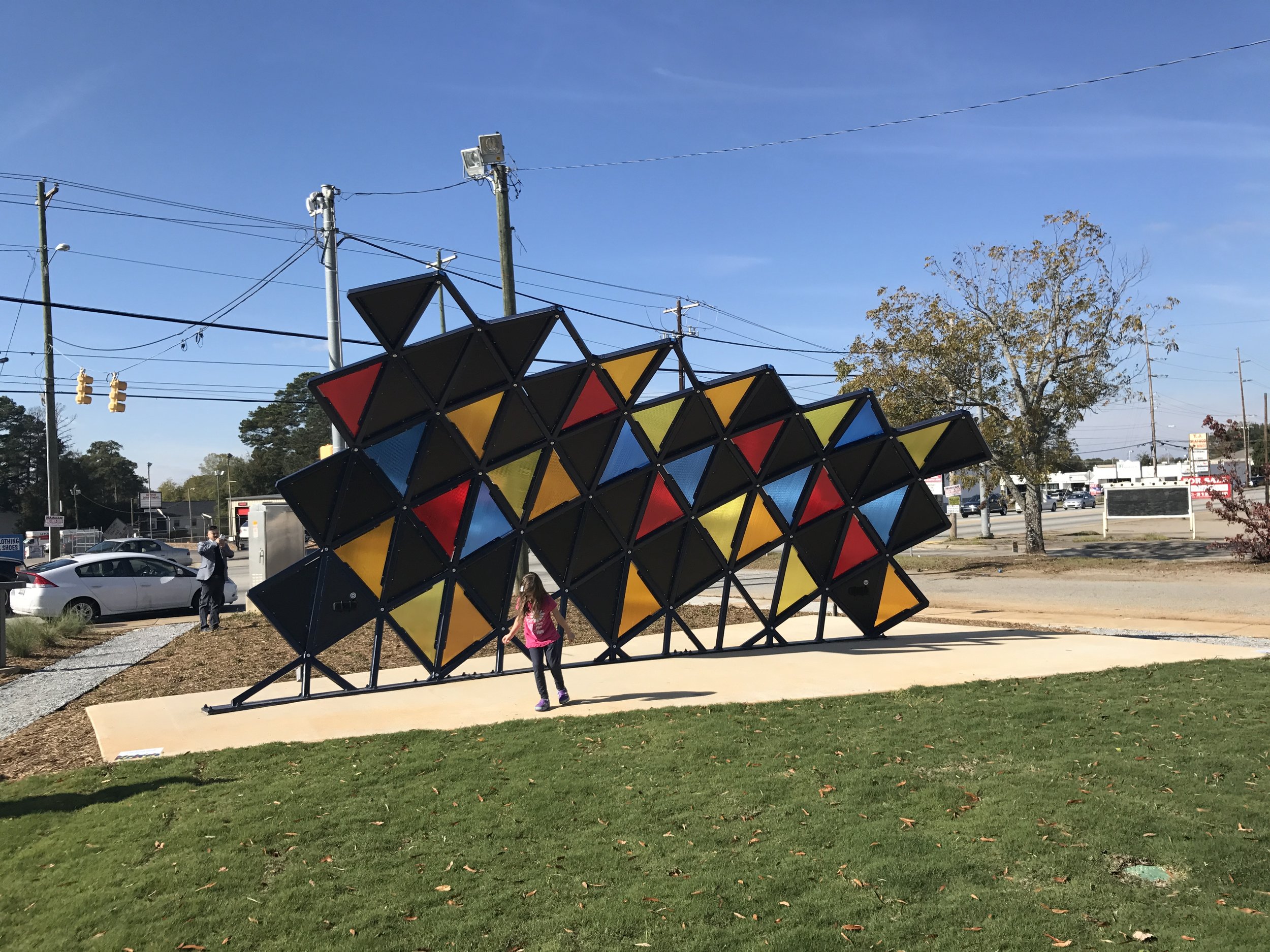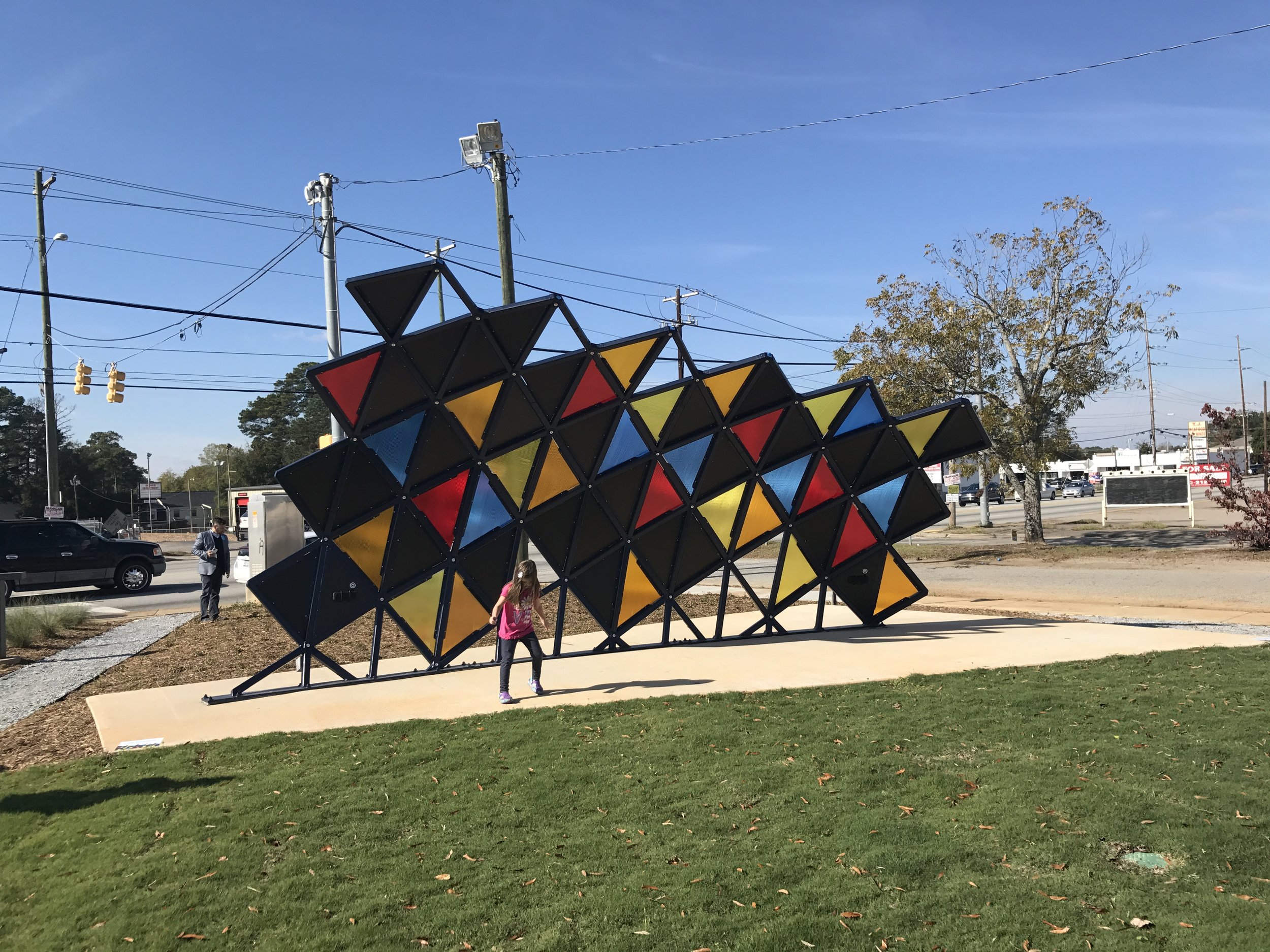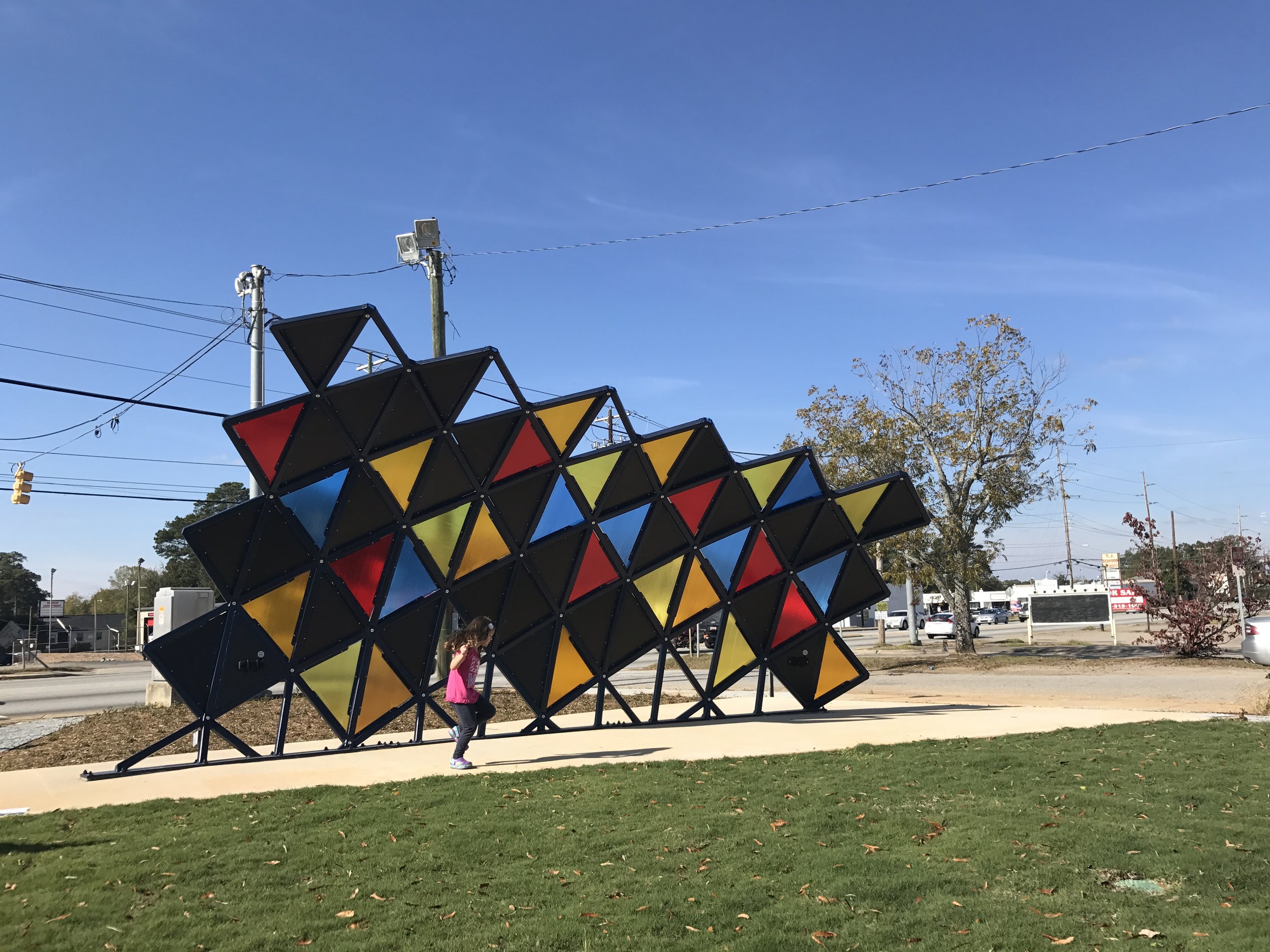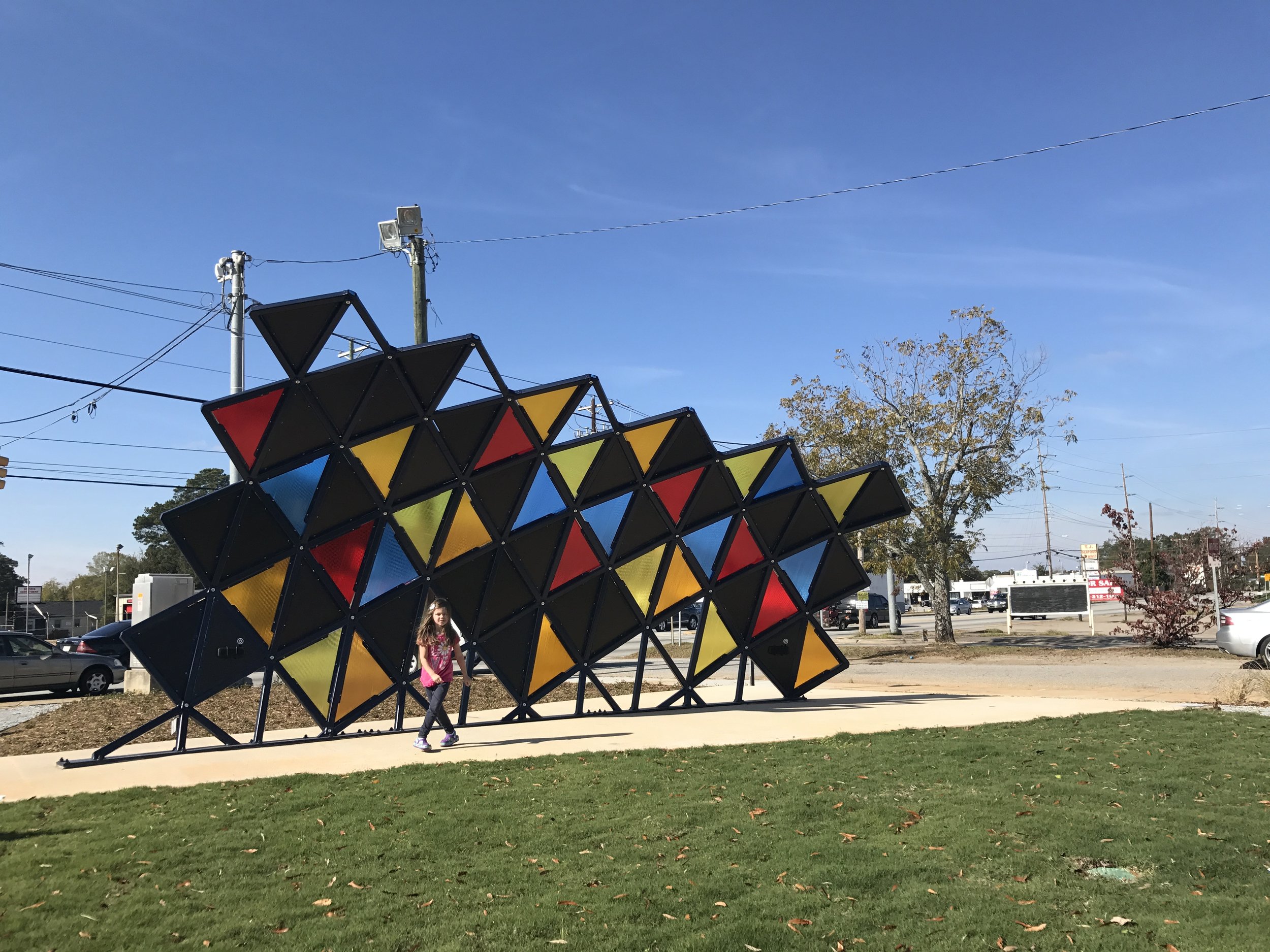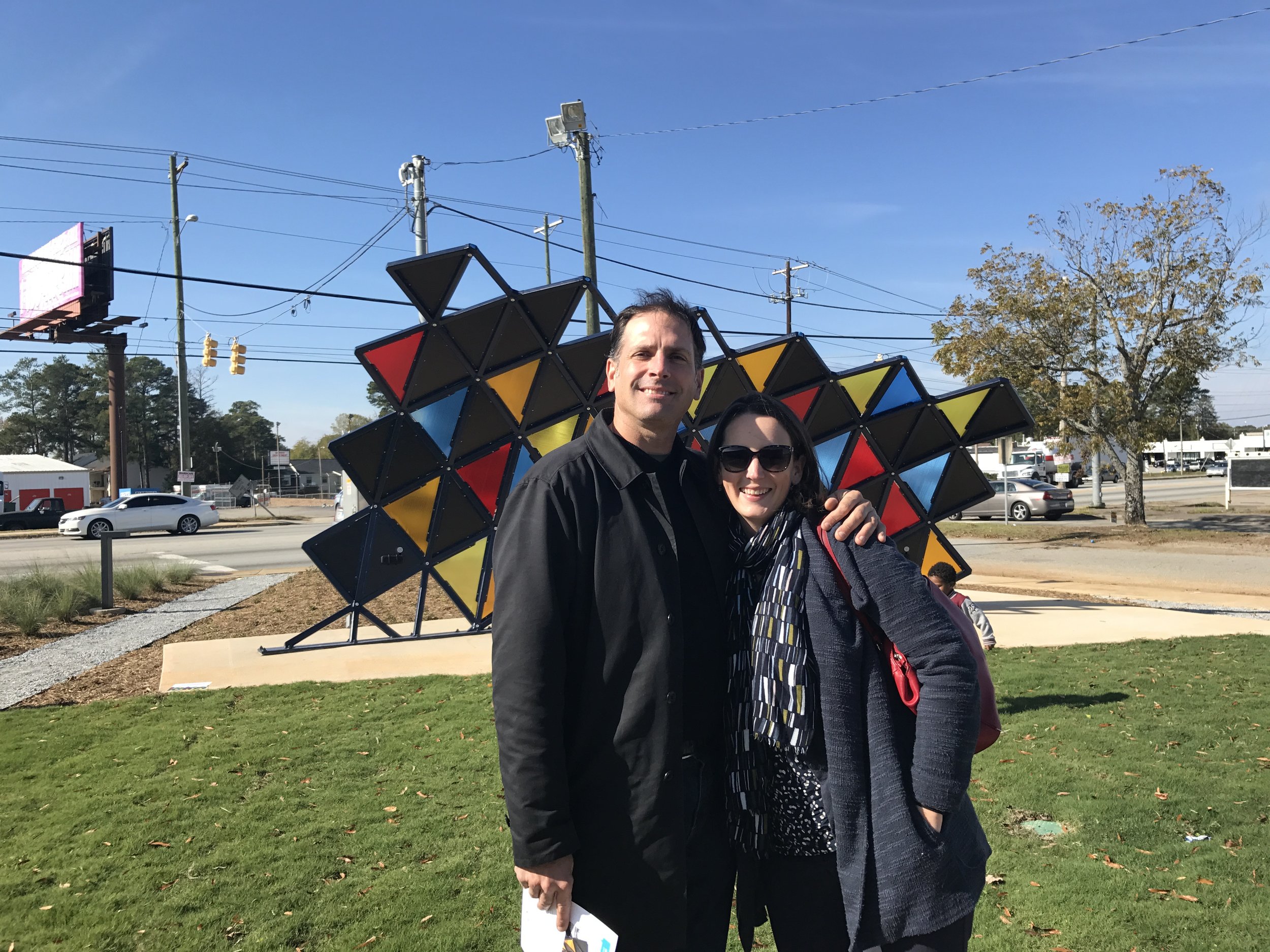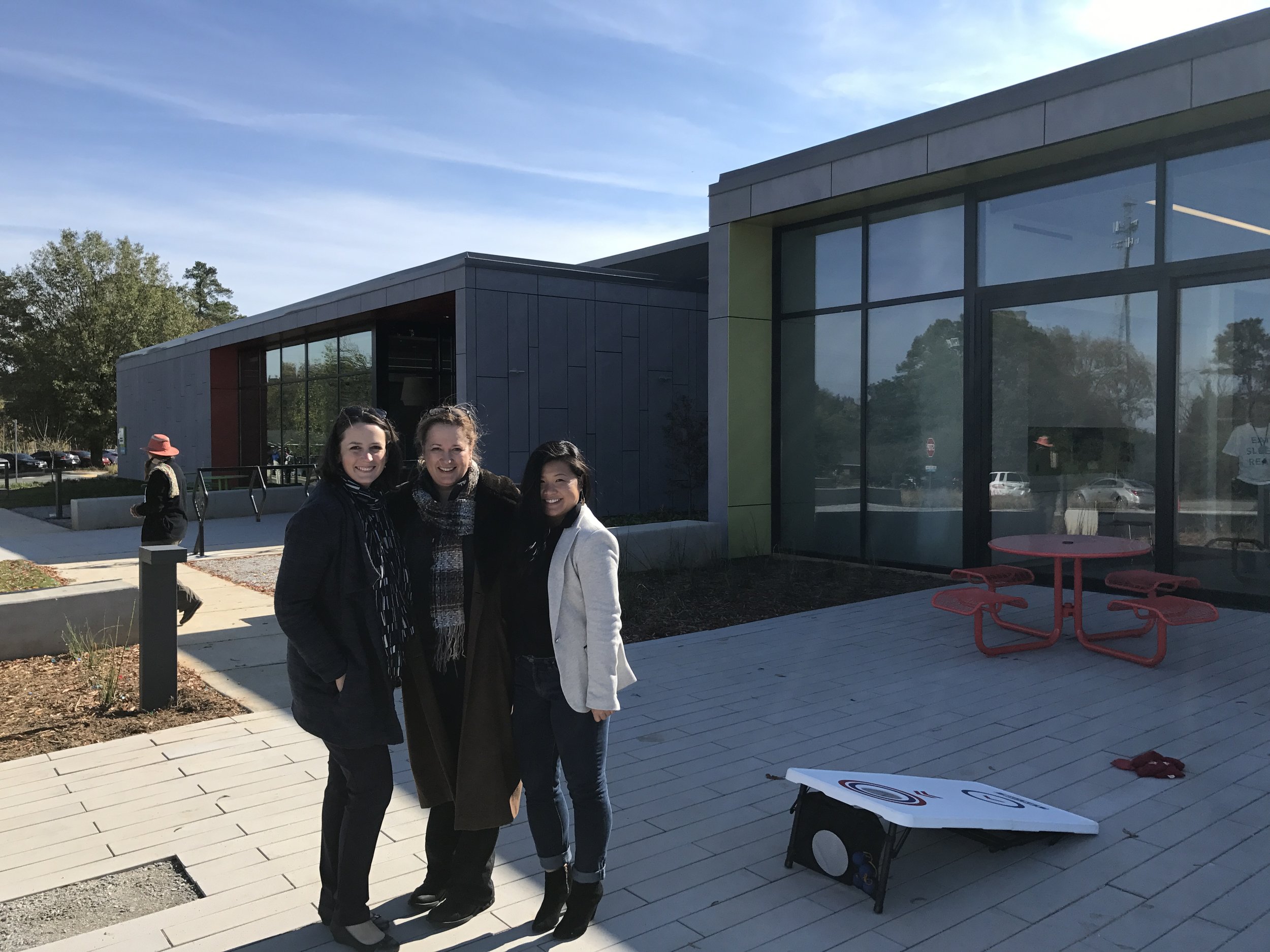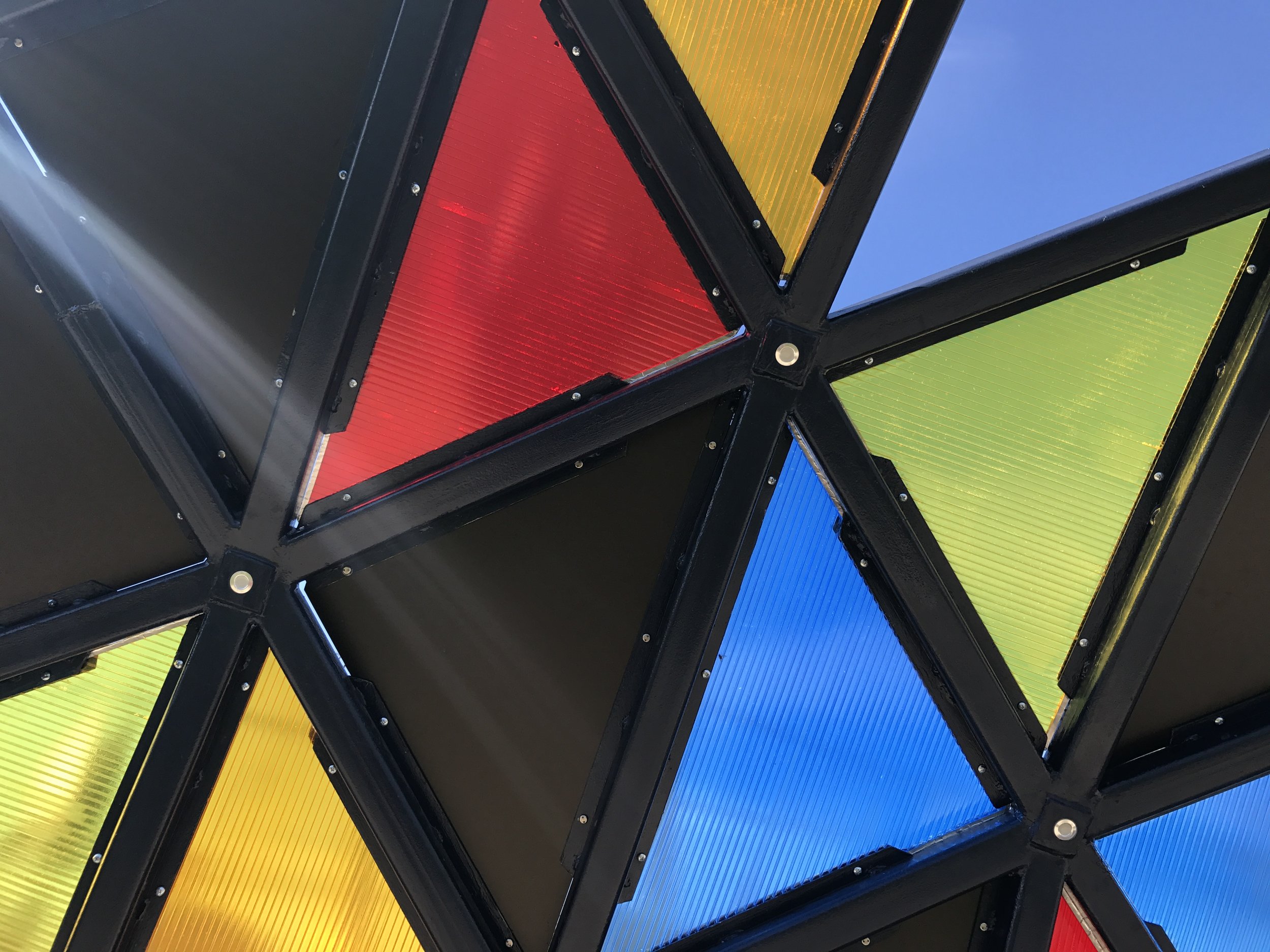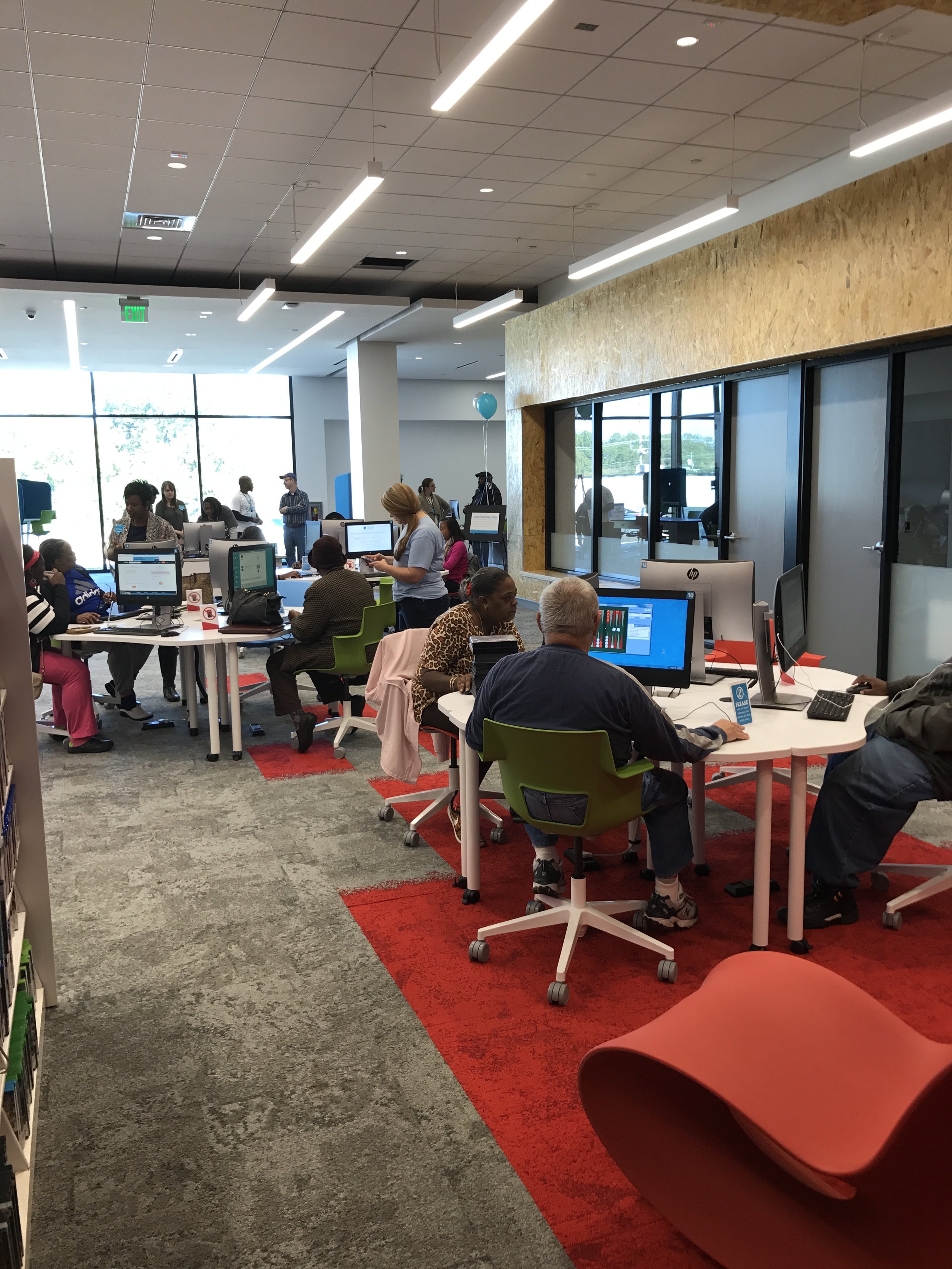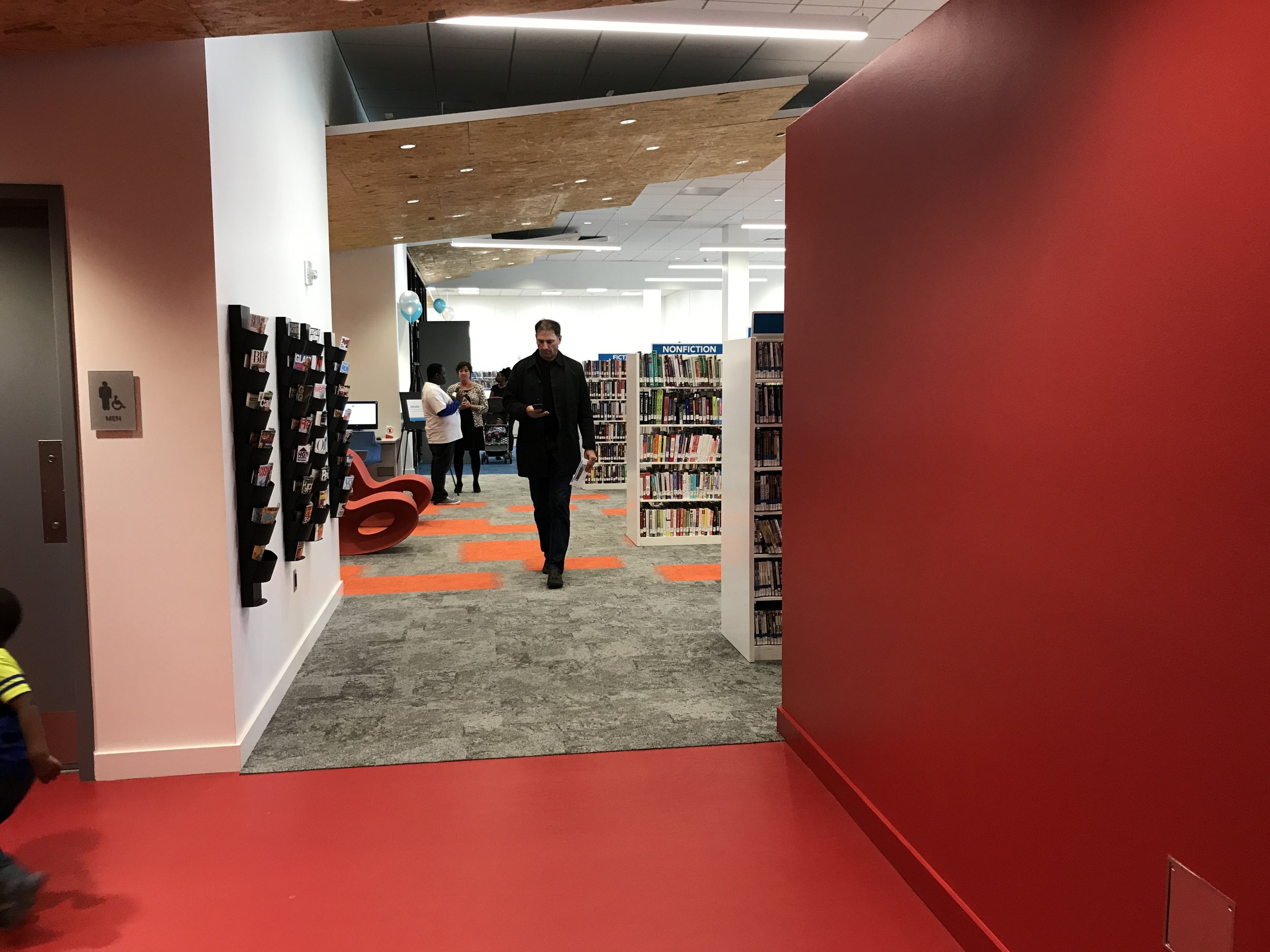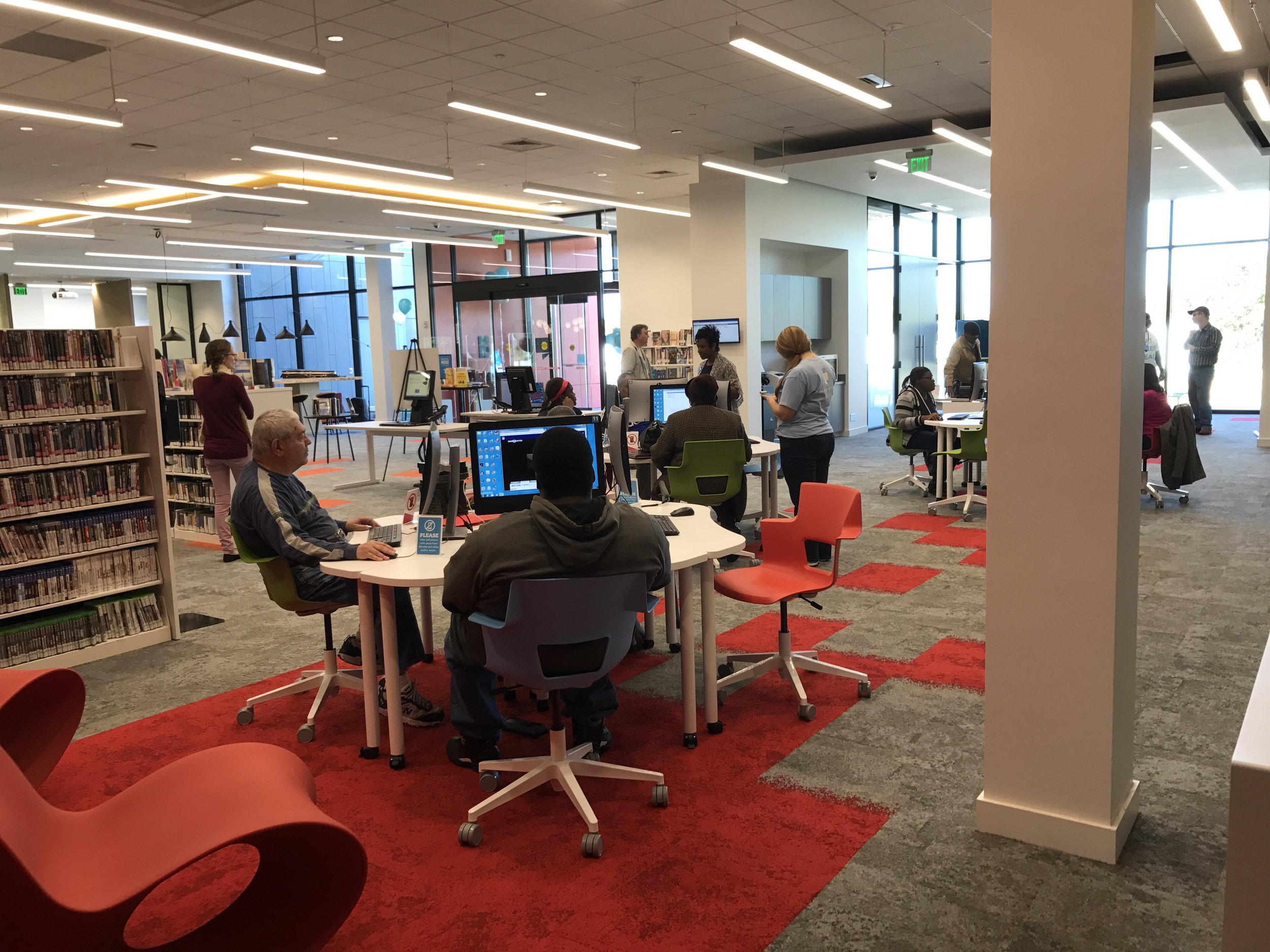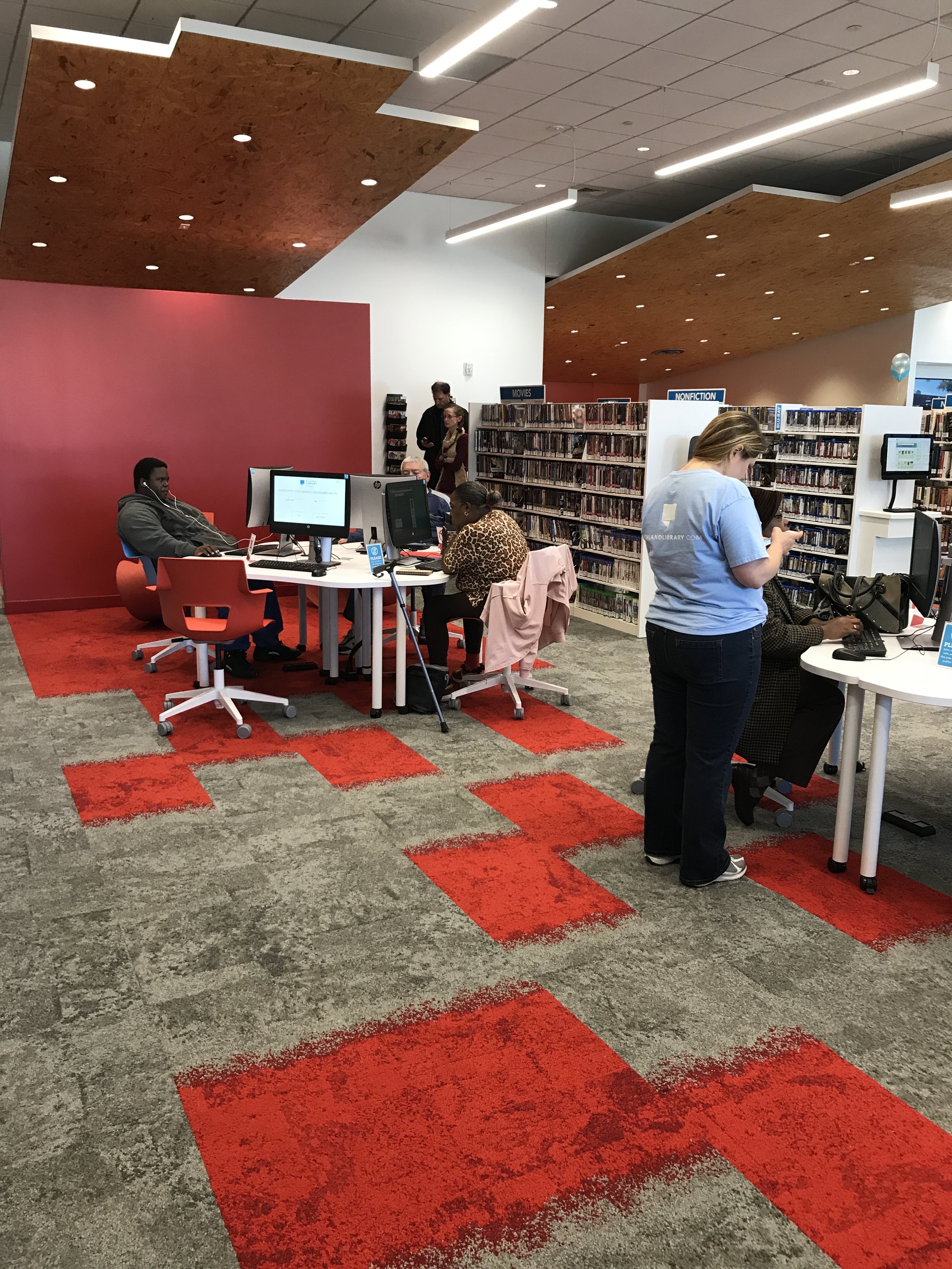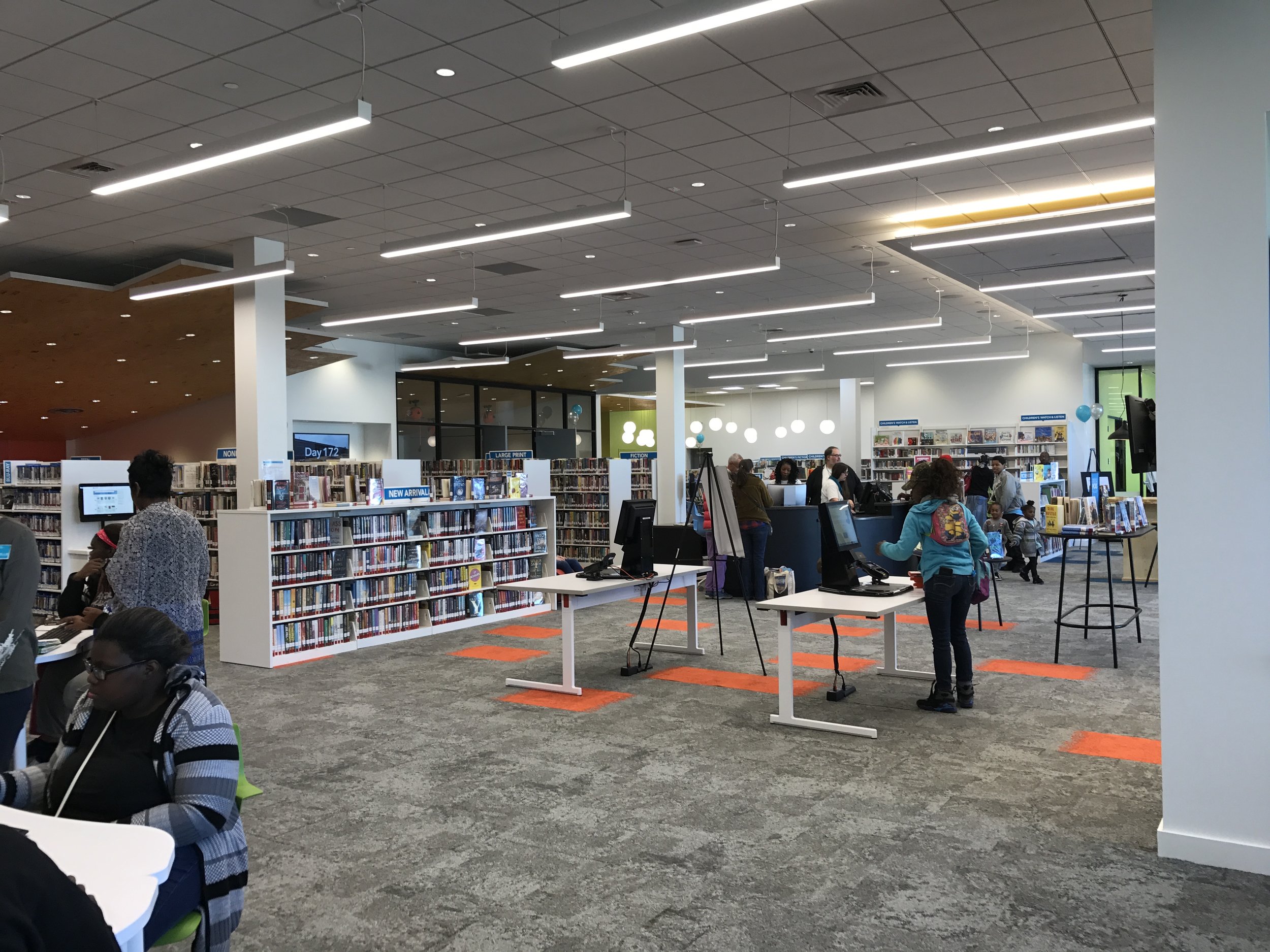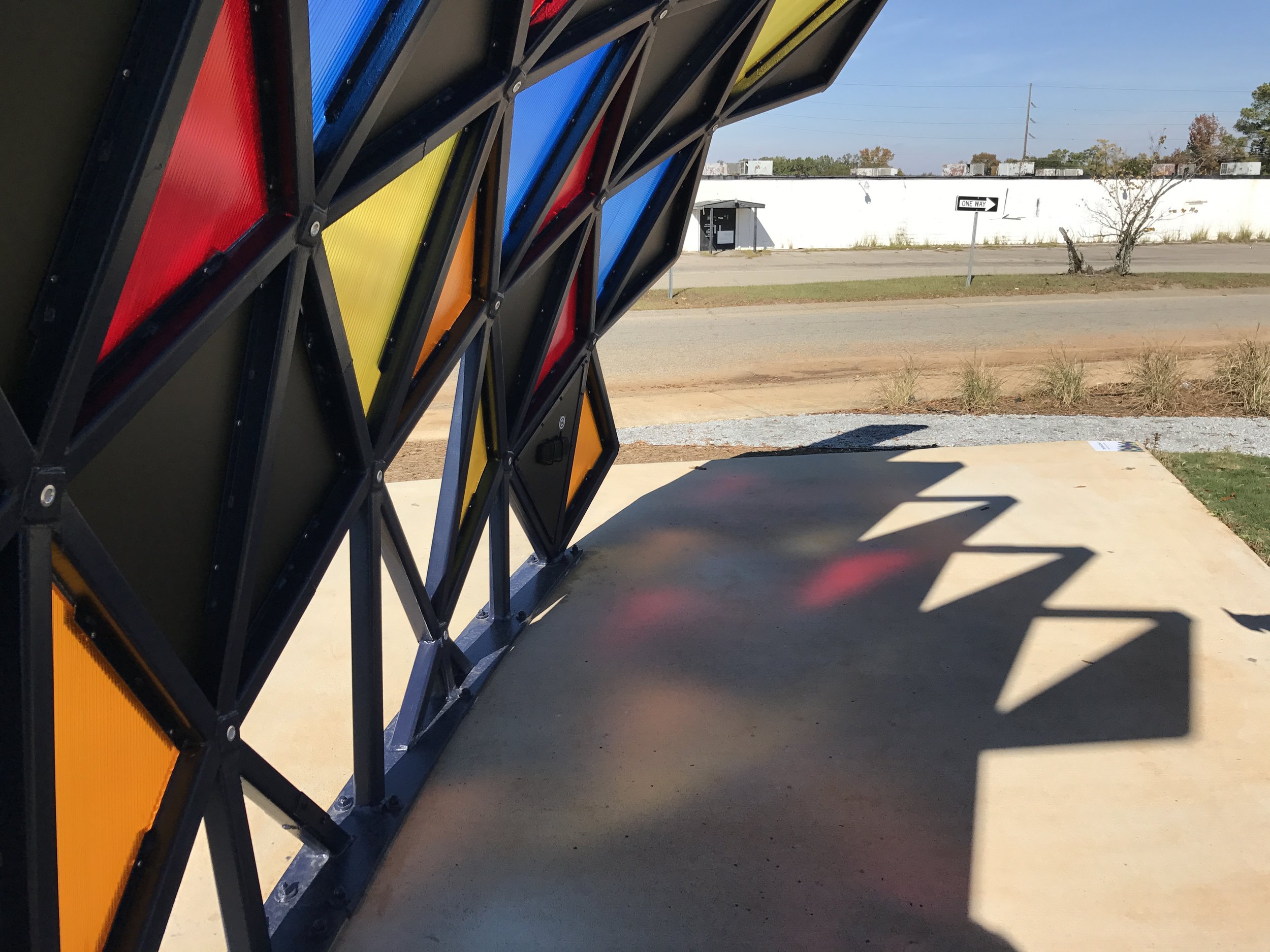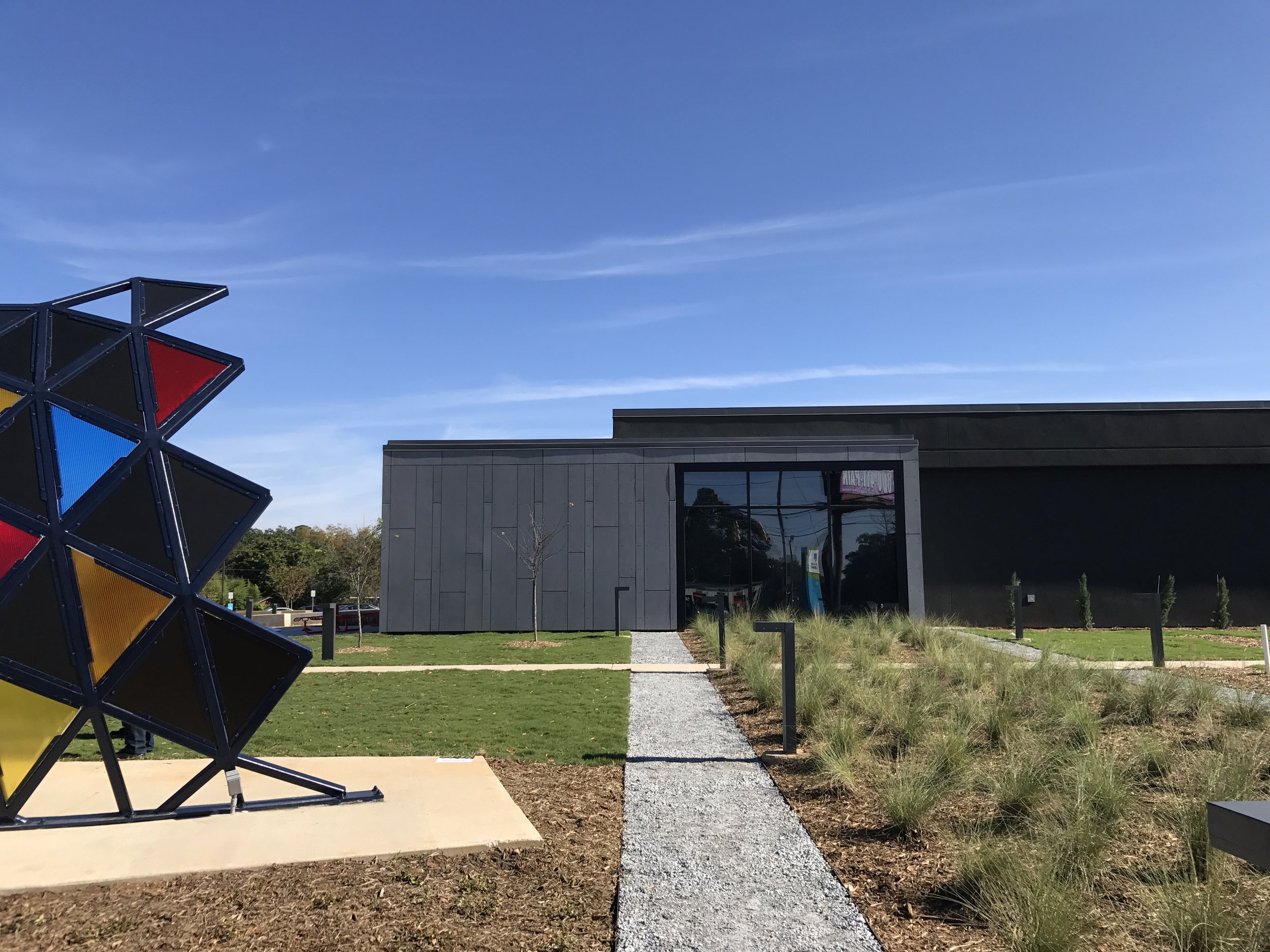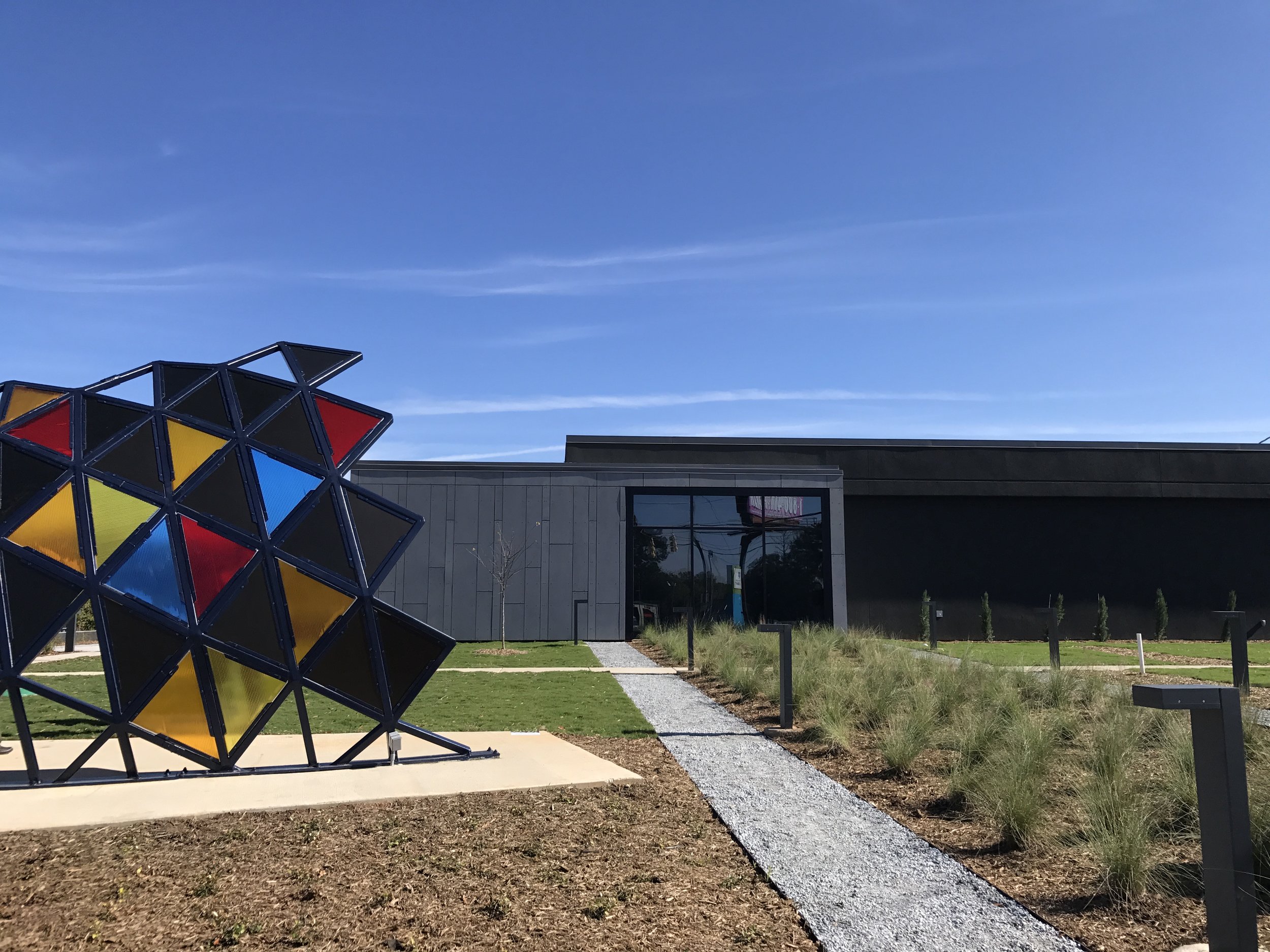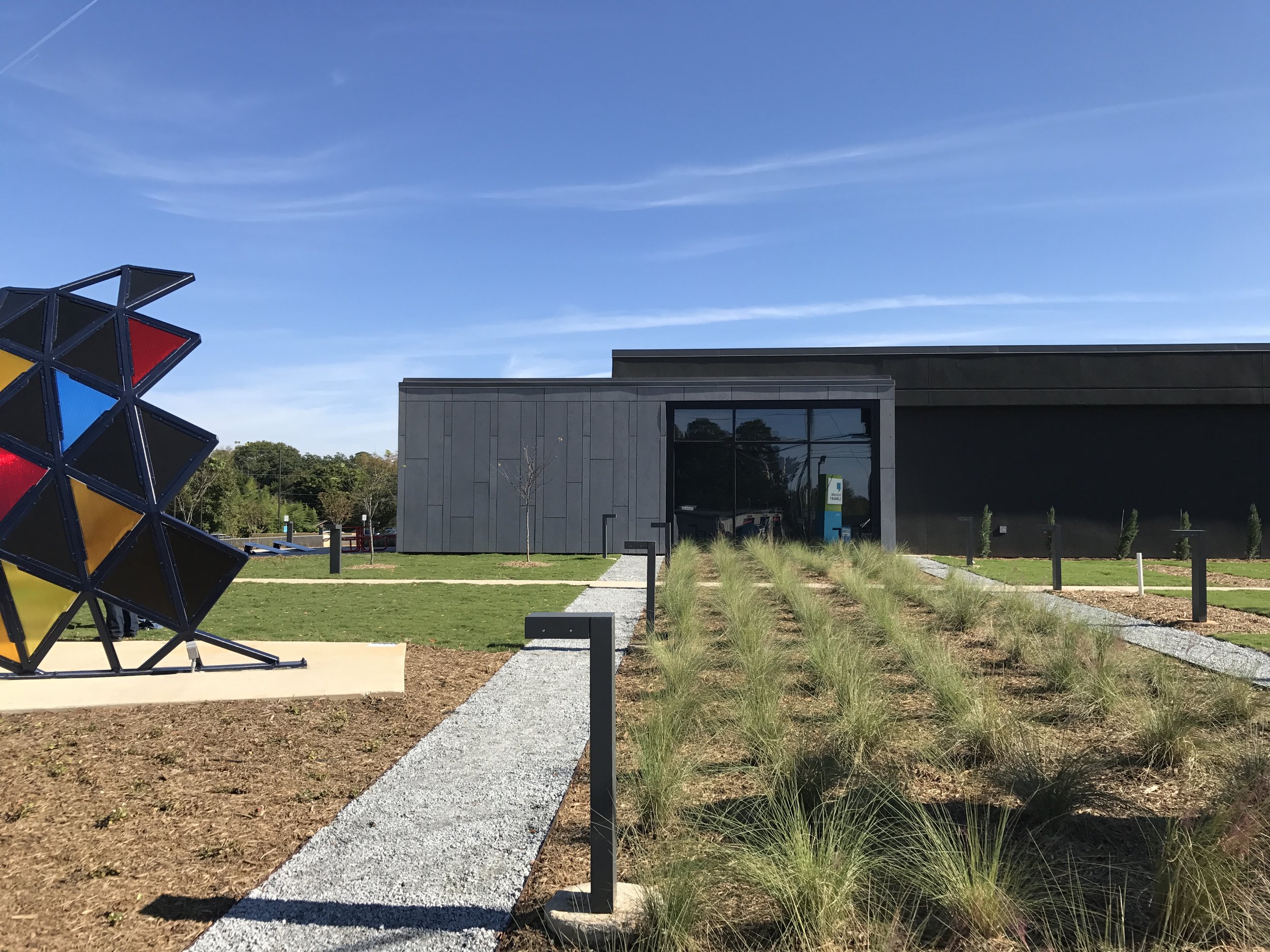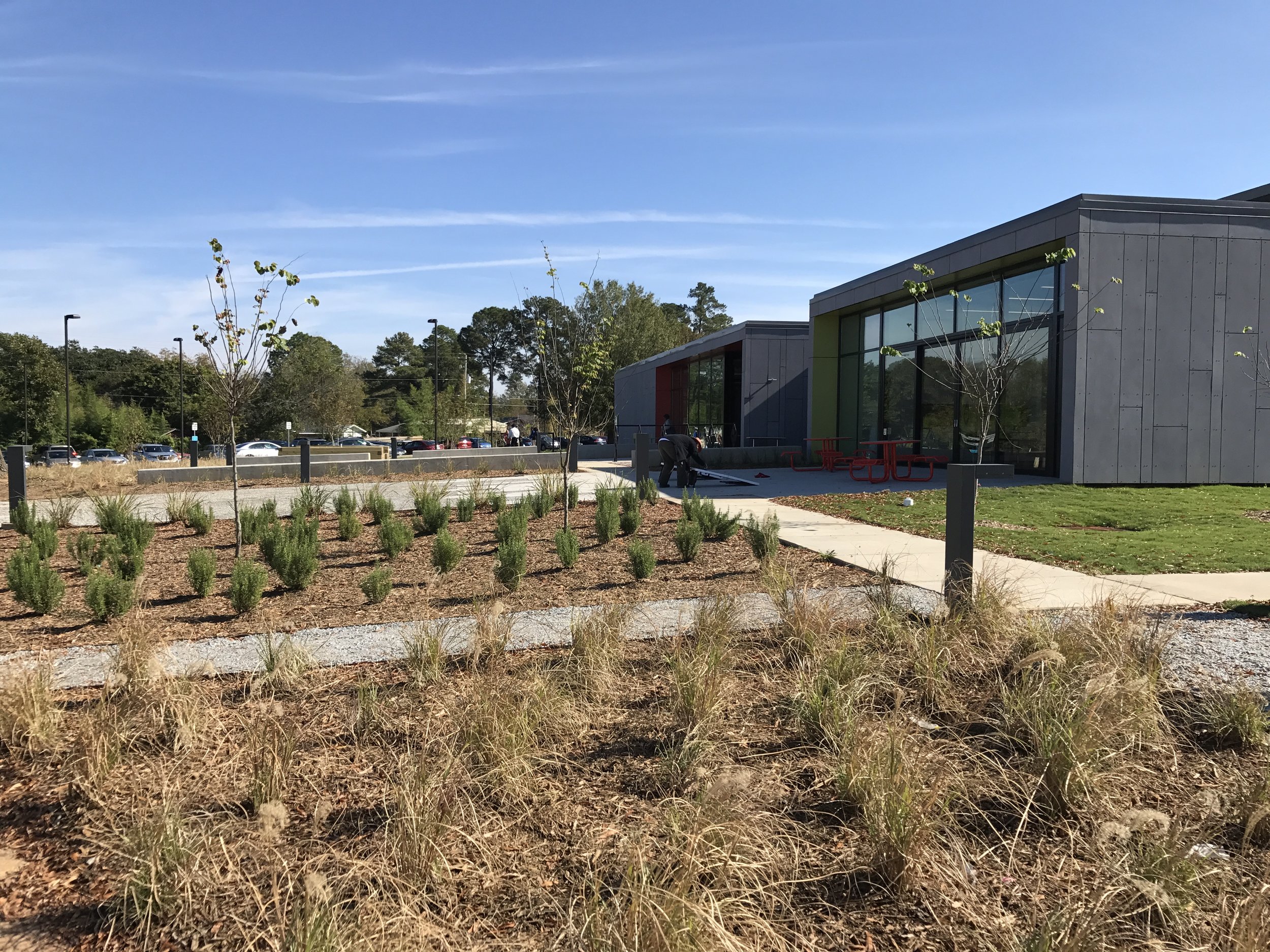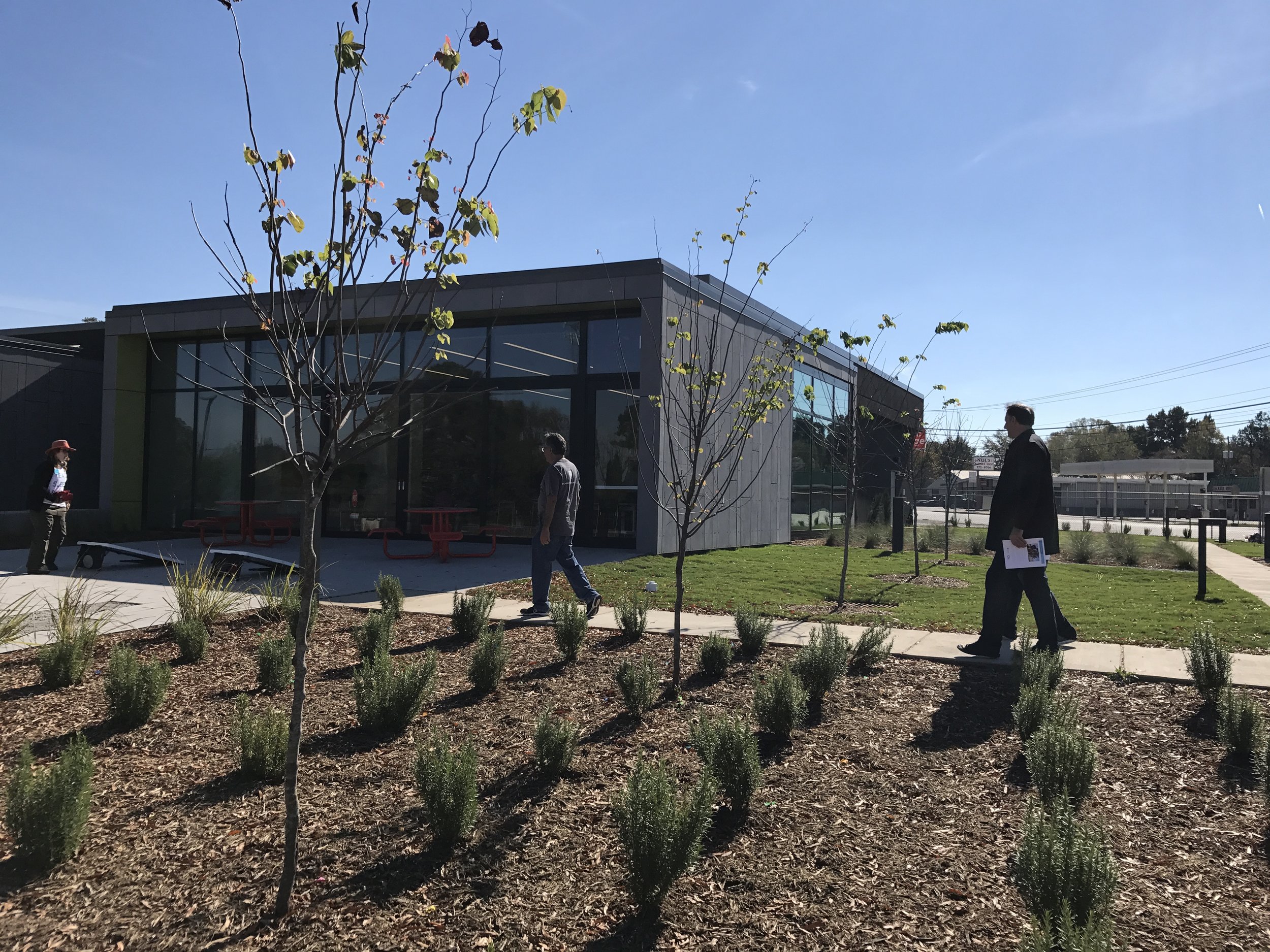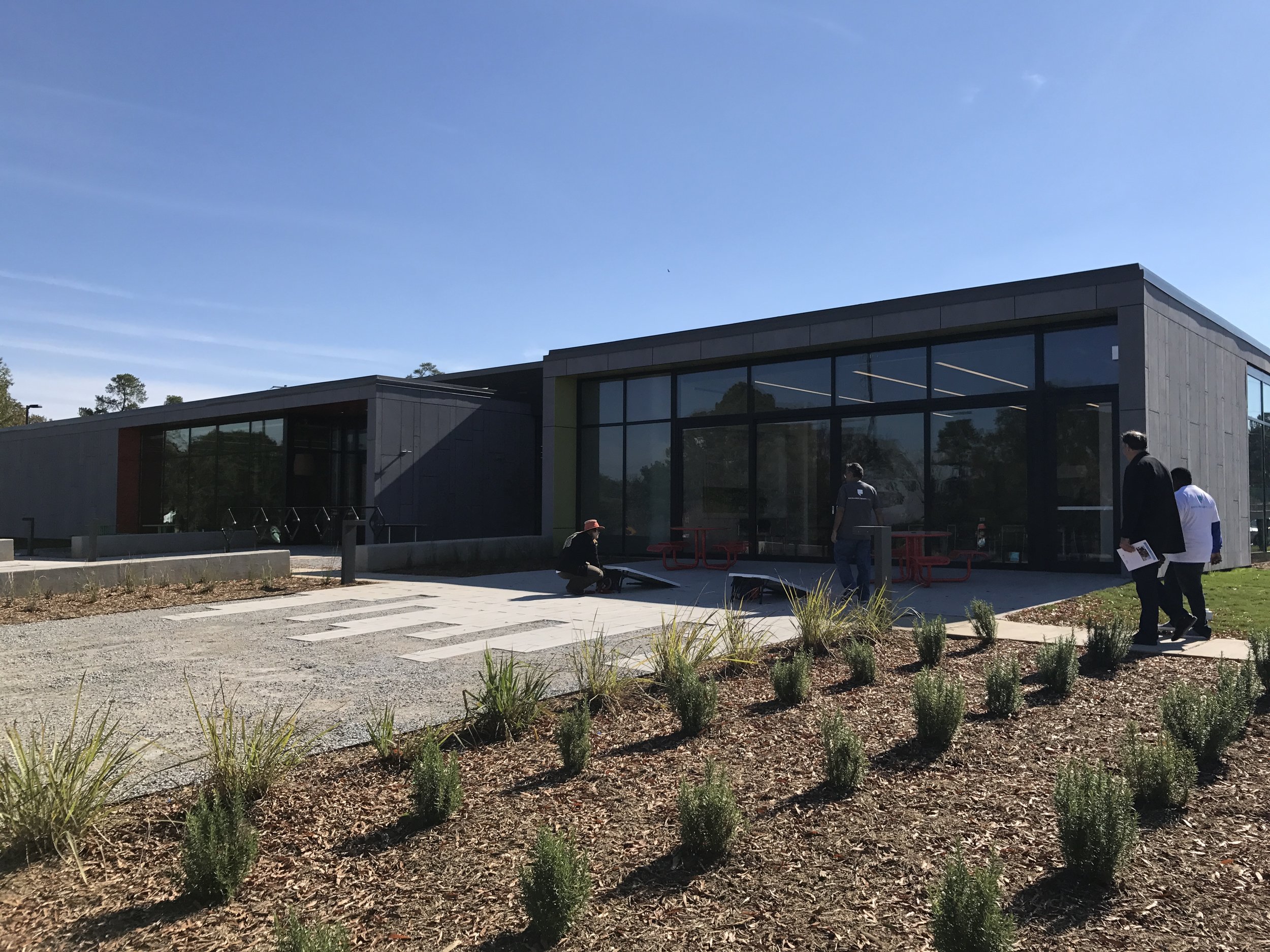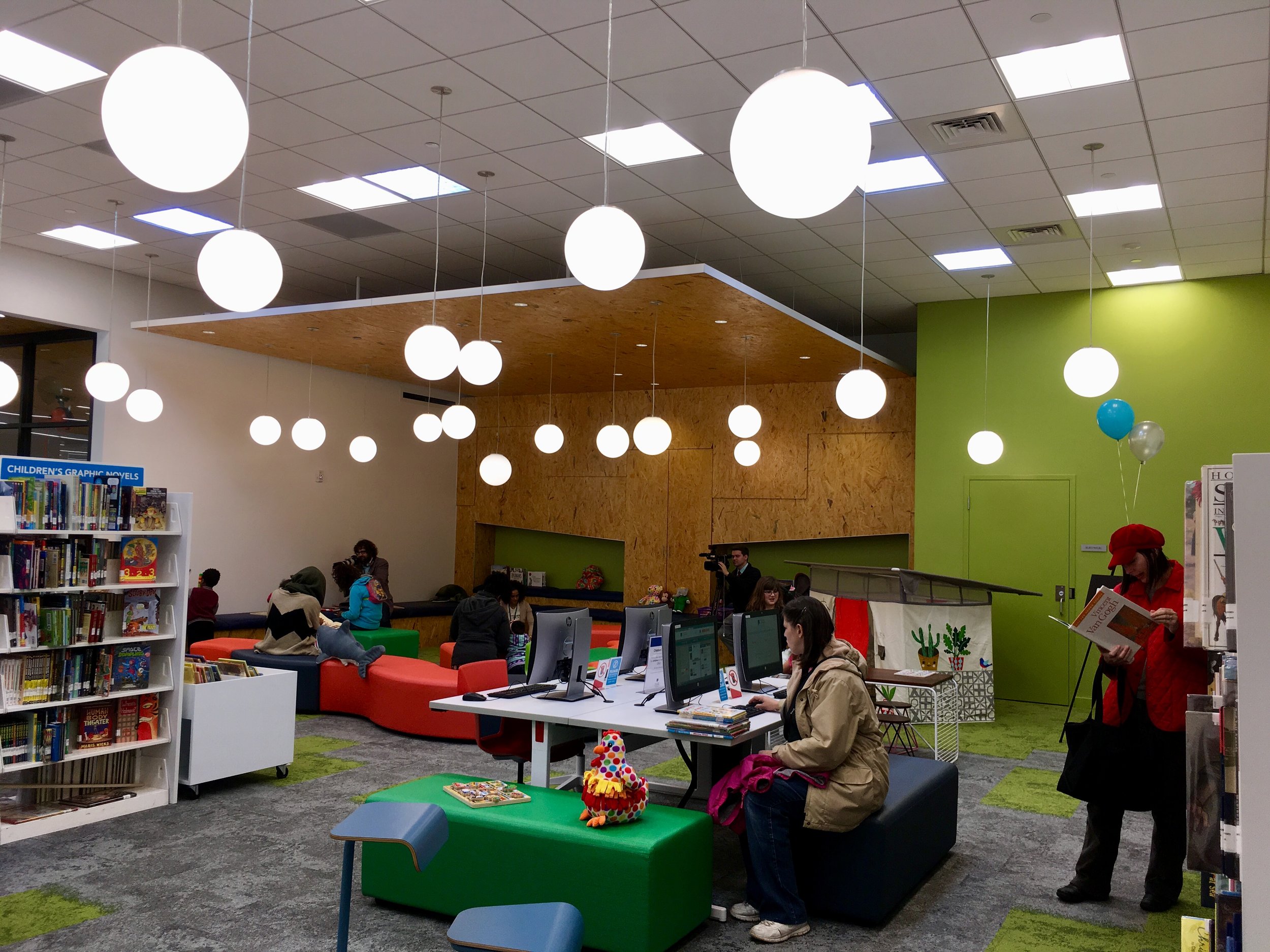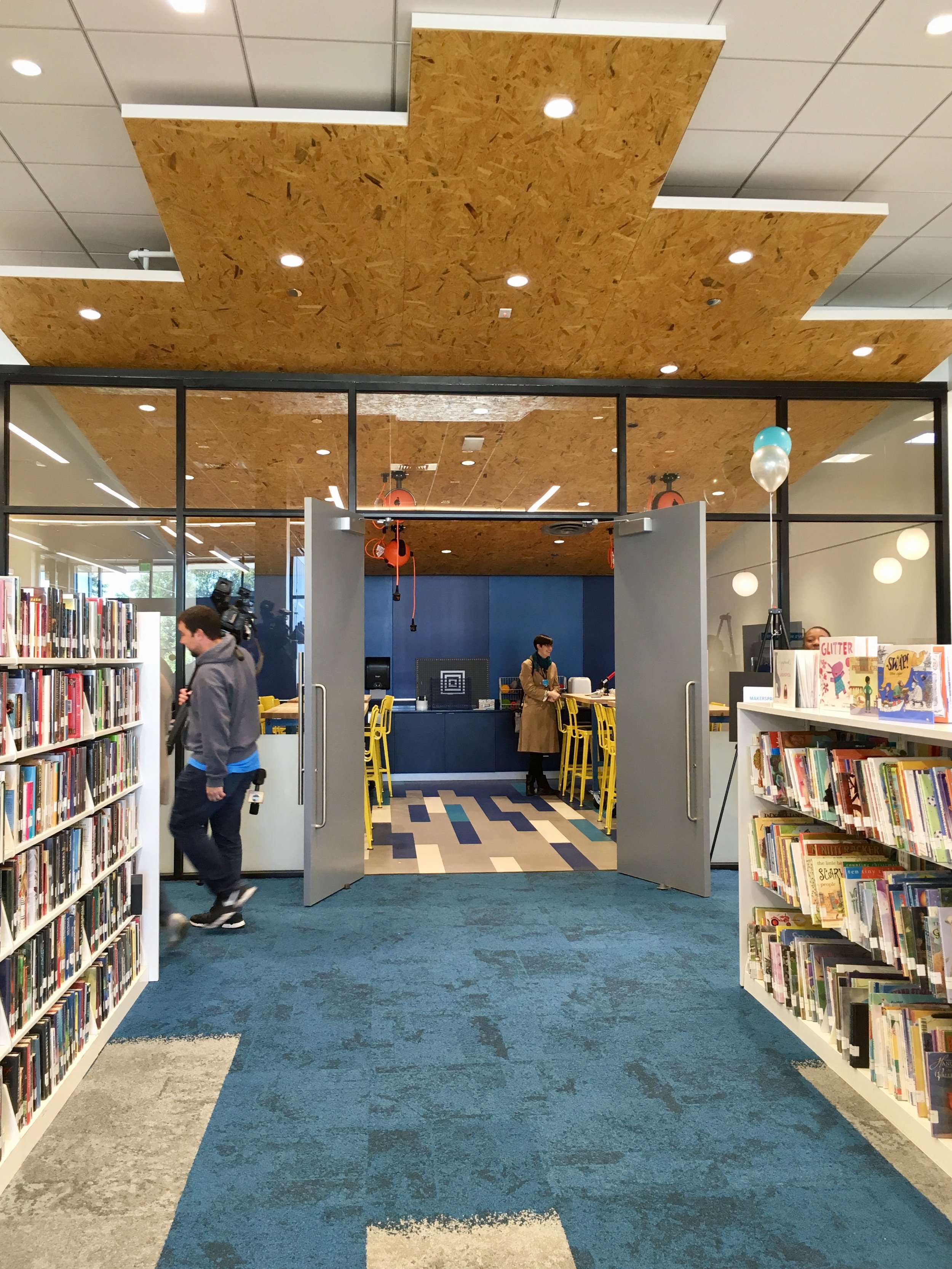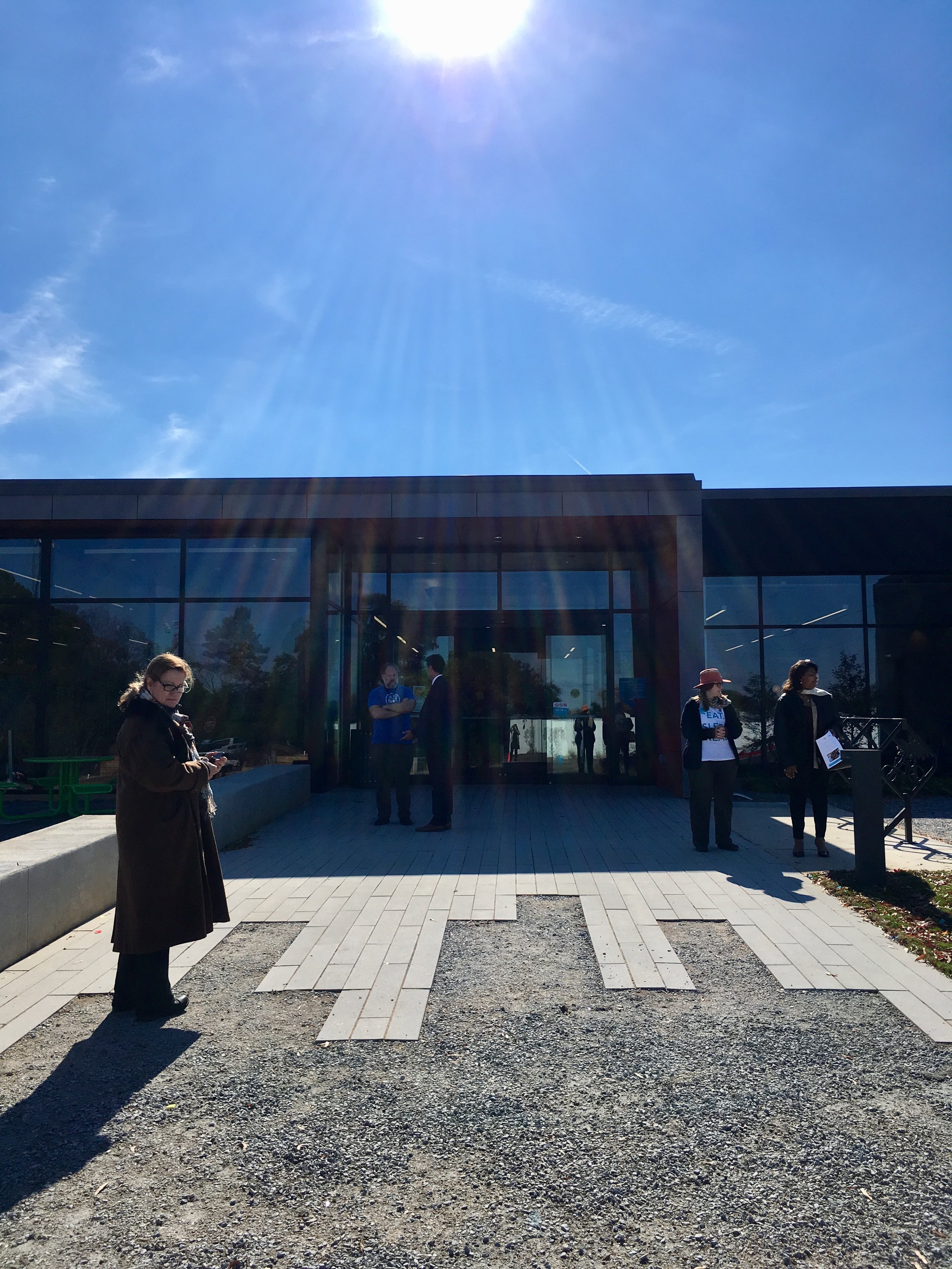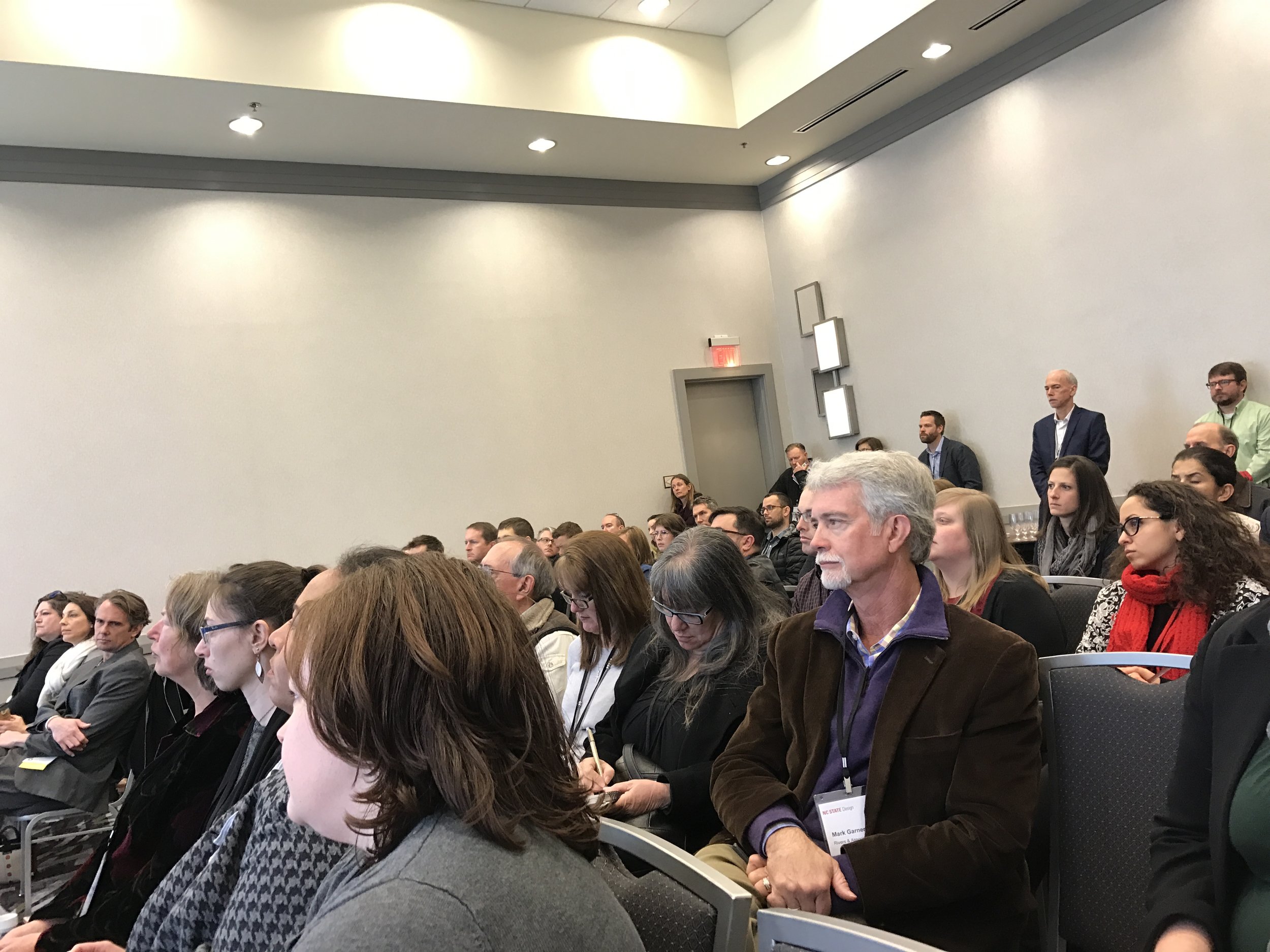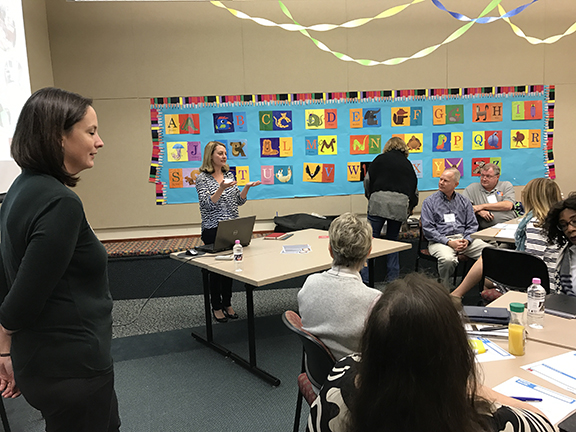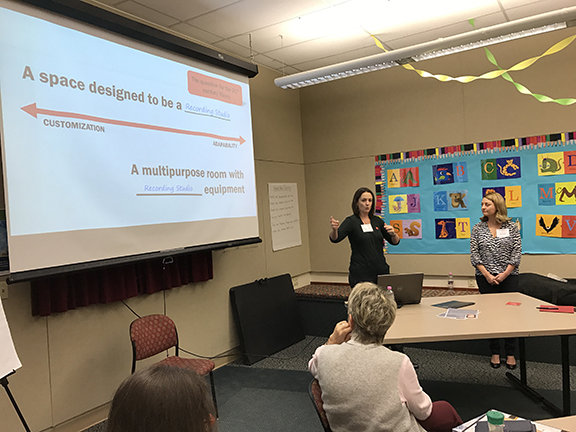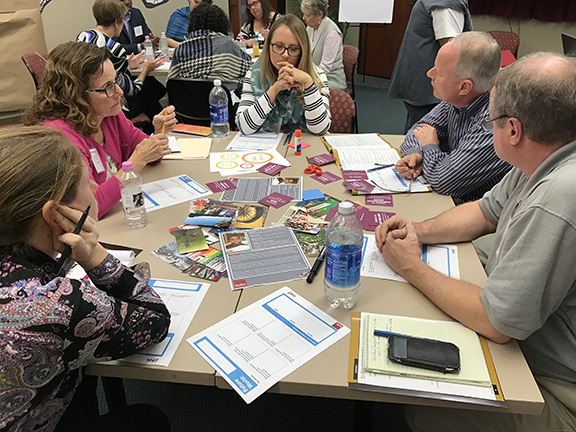Growing Home | Design Institute Design Challenges
Mez Joseph
VANCOUVER COMMUNITY LIBRARY HOSTED AN EXPLORATION OF COMMUNITY ENGAGEMENT, SUSTAINABLE DESIGN & ADAPTING TO CHANGING NEEDS
By Meredith Schwartz
Librarians from around the country convened on October 20 in Washington State, at Fort Vancouver Regional Library’s (FVRL) Vancouver Community Library (VCL). The building, a 2015 LJ New Landmark Library (NLL), serves as gathering place and convener for the midsize city (population about 175,000 as of 2016) that is also the largest suburb of neighboring Portland, OR, just across the river. Designed to evolve with changing community needs, the building exemplifies the day’s themes from start to finish.
COMMUNITY CONCEPTS
The first panel, Community Engagement 360°, took a deep dive into how to engage all of a library’s many stakeholders in the process of planning a new or renovated library (something FVRL engaged in with VCL), bringing along even skeptics, and how to translate that input into the design. Panelists Jennifer Charzewski, principal at Liollio Architecture, and Dennis Humphries, principal at Humphries Poli Architects, were led by moderator Amy Lee, FVRL public services director.
The panelists suggested the first step is to start not with the existing building but with how the library wants to be seen in the community—as a leader, enabler, dreamer, or disrupter. Charzewski took the concept a step further, advising libraries to “develop a brand or identity as the result of the story of who they are and have it be inseparable from the community.”
While community conversations and focus groups are important, both noted the use of alternative methods to ensure that all voices get heard. Charzewski drew on her experience working on the St. Helena Branch Library, Beaufort County, SC, another 2015 NLL, to recommend passing out cameras for community members to take pictures of things that are important to them and holding an open mic night to collect stories (with a ringer or two in the audience to get things going). One man brought a picture of his grandfather sewing a net, a dying craft, which ultimately informed the woven nautilus feature of the final design; another told a story of community sing-a-longs, with stomping on the wood floor. When the library opened, a resident who had attended the meeting hit her cane on the floor, which was elevated so it resonated, and said, “Wow, you guys listened.”
Humphries prescribed taking locals “on an adventure to look at library and nonlibrary spaces so they don’t stick with what is familiar. Focus on what is unique to them, but think outside the box.” He also advocated documenting on Post-its “so everyone has the same voice instead of having some speakers dominate,” then reading them back so they feel heard.
Charzewski urged librarians to include their design team in the feedback-gathering process and to go where the community is, since often the power users who attend forums don’t “represent the broad spectrum of [patrons]” let alone, as Lee pointed out, community members who don’t yet use the library, a demographic Lee said FVRL tried hard to reach during the design process.
Setting up a booth at a farmer’s market and using dot voting and Sharpie markup of images from other spaces, said Charzewski, garnered a broader range of input, as did reaching out to neighborhood associations and review boards to gather info and create a sense of ownership. Other tools included giant question dice and directed storytelling—have a toolkit with a variety of options for engaging community members, she advised. She also proposed keeping the documentation to show later to politicians.
Despite the diversity of opinions gathered through such a process, Charzewski reassured attendees that common themes do rise to the top, such as “cabin in the woods” for one library she worked on and “revitalizing a blighted neighborhood,” for another. “Stories…become the guiding lights for the project.” Local materials, too, can serve as touchstones.
Humphries offered an example: the phrase “the planes and the plains” to describe what was special about a particular community arose through the public input process for a library on which he worked. A constituent made a call and was able to get the cockpit of a 737 donated to the library, and though it is in the kids section, it has become the library’s most popular feature for adults as well.
He also reminded attendees to seek local input not only about what to change but what to keep the same, particularly in cases of renovating a beloved iconic facility. For instance, he said, when renovating a building designed by Michael Graves, he sought to “find out what people cherished” about the existing structure—and found it was not what he expected. Humphries also urged librarians to include homeless patrons in these conversations and to remember that small ideas are as important as big ones.
An audience member asked how to resolve the disconnect between features that residents like in theory but don’t use in practice, such as whiteboards. Both architects recommended rapid prototyping. In one example Humphries cited, a library built its service desk out of plywood and kept changing it as it was used until a design that was sure to work was reached.
SUSTAINABLE SUBSTANCE
Another major theme of the day was sustainability, as befitted VCL’s Leadership in Energy & Environmental Design (LEED) Gold–certified setting. Patti Southard, program manager for the “GreenTools” building program in King County, WA, delivered a keynote on transforming our environment through regenerative design. Southard emphasized connecting environmental considerations to equity and social justice, citing King County’s strategic plan, impact review tool, training, and scorecard and its partnership with Miller Hull to develop equity training for architects. She laughingly commiserated with attendees about this new item on an already ambitious agenda: “in addition to everything else you have to do, you now have to combat fascism.” But, she said, it’s important and, in collaboration, achievable. “We’re in it together, y’all.”
She also spoke on the Living Building Challenge, saying “it’s an advocacy tool and it really is a challenge” to push past minimal damage or even zero damage goals to aim for buildings that make things better. Southard said the water and energy components of the challenge are reachable; “the biggest challenge is finding materials that are toxin free.” But, she said, we must “balance easy wins with pushing the envelope” because the role of libraries as examples for others to follow is important for the good of all.
Following Southard’s inspirational presentation, Amelia Shelley, FVRL executive director, led a panel on Smart Sustainability featuring Jeff Davis, principal, Arch Nexus, and Chris Noll, principal, Noll & Tam Architects. The primary focus was on people—specifically staff and patrons who will use the building.
Davis suggested Inhabit, a tool that trains those in the building on how their behaviors impact energy usage. There are also tools that help with energy conservation, such as lights that let staff know when to override the HVAC and open the windows. Noll emphasized the importance of training a broad range of staff, not just a few key facilities point people, saying the latter are usually “pretty forward thinking and willing to buy in; the problem comes at the back end.”
Davis also said solar panels are a good return on investment as costs are coming down and suggested focusing on the areas around the windows and where the roof meets the wall—libraries can even implement “envelope commissioning” to see how those spaces are performing.
Davis and Noll both emphasized the importance of daylighting. “Not just sticking a skylight in anywhere and calling it daylighting but thinking it through to maximize light and minimize heat” through complex modeling computer programs, said Noll. Water conservation is a tougher sell because it doesn’t save libraries much off the bottom line, he added, but at least in drought-prone places such as California, consciousness has been raised. Davis concurred. “If you think about the costs of conveying it to your building and away, those are huge costs. It gives the community a return on investment,” he said, even if it doesn’t show up in the library budget specifically. However, some green features don’t deliver a good ROI, even though they help a building qualify for LEED status. Davis recommended skipping electric car charging stations. “Nobody uses them,” he said. Noll said the same of employee showers (which count as sustainable because, in theory, they encourage employees to walk, run, or bike to work rather than drive).
1. Keynote speaker Patti Southard from Washington State’s King County GreenTools shared thoughts on regenerative design. 2. Lunch was served at Fort Vancouver’s nearby historic Red Cross Building. 3. Attendees carved out a separate space for teens during Puyallup PL’s challenge session. Photos by Kevin Henegan
ADAPTING & EVOLVING
The final panel of the day addressed how libraries can create buildings that can change with the times, how to implement change to even recently constructed buildings—and how to sell stakeholders on the necessity of such changes without fostering the perception that the original plan was a mistake. Meredith Schwartz, executive editor, LJ, moderated a panel featuring Ruth Baleiko, partner, Miller Hull Partnership; David Schnee, principal, Group 4 Architecture, Research + Planning; and David Wark, principal, Hennebery Eddy Architects.
“A building is not something you finish but something you start,” said Wark. Within a building, each system has its own life span, leading to short- and long-term alterations. In addition, he said, buildings must respond to external factors, such as the continued expansion of tech and, particularly in the Northwest, sheer population growth.
Baleiko added, “It’s not if your building will be renovated but when.” She cited Bruce Ziegman, former FVRL director, who built VCL, as saying, “This has to be a 100-year building—the most flexible chassis to change after we’ve gone.”
Specifically, Baleiko suggested fewer columns, better sight lines, and raised floors as gifts to librarians’ successors to allow easy relocation of shelving, power, and lighting. “Embrace the idea that people after you need to be nimble” and respond to users.” And what are those users likely to ask for? According to Schnee, the basics: “more power, more data, more seats.”
1. Discussing adaptable design were Hennebery Eddy Architects’ David Wark, Group 4 Architecture’s David Schnee, and Miller Hull’s Ruth Baleiko. 2. Chris Noll from Noll & Tam (l.) and Jeff Davis from Arch Nexus talked smart sustainability. 3. Charzewski shared her expertise during the speed sessions. Photos by Kevin Henegan
Community needs are constantly evolving, and by the time a new building comes to fruition, “new behaviors are starting to manifest,” Baleiko said. “That’s how the tweens [area] came about [at VCL]. We had to retool and carve out a space. The idea that any update means we failed is wrong. Change is more rapid now, and it’s a good thing.”
Schnee cited the Santa Clara Central Park Library, CA, as an example of a relatively recently remodeled library in need of an update. Its reading room, finished almost 20 years ago, featured a reference desk and periodicals collection. So, said Schnee, “we brought in drawing tables to replace the reference desk and got rid of the periodicals collections and put in a virtual reality gallery instead.”
Schnee urged attendees to “take lessons from the hospitality and retail worlds. The public expects things to change. We have to tell them there’s a price tag for that."
To adapt to the evolving needs of their own users, attendees applied the lessons of the day in breakout design sessions (see p. 38ff.) and brought their own challenges to the architects through speed sessions. For those who want to know more, join us at the next Design Institute, in Salt Lake City, April 26–27.








